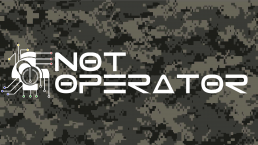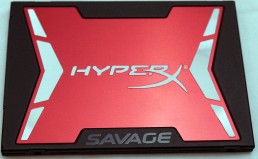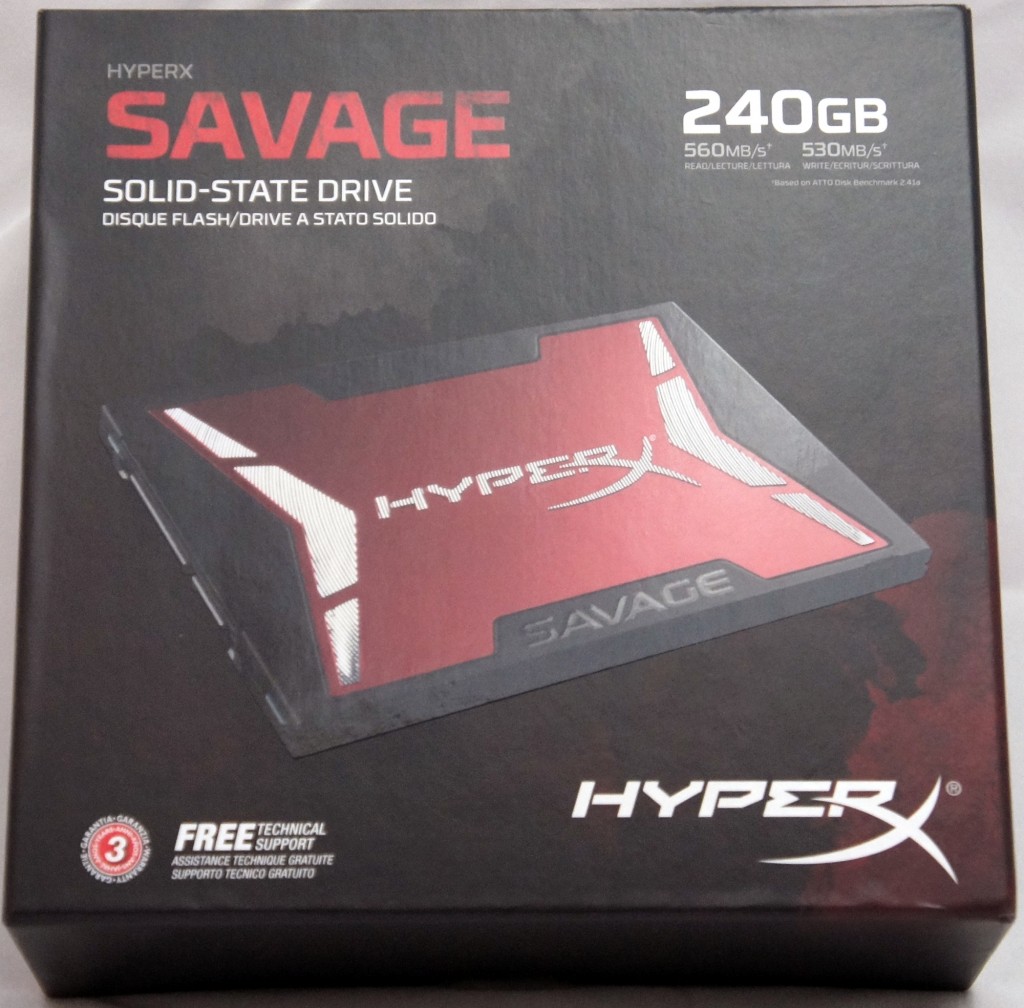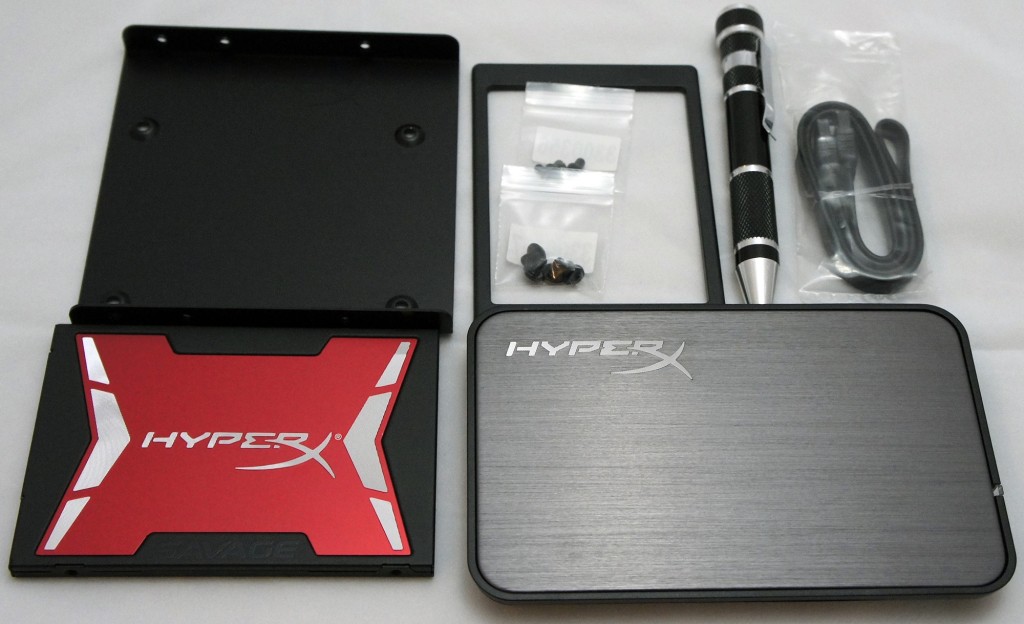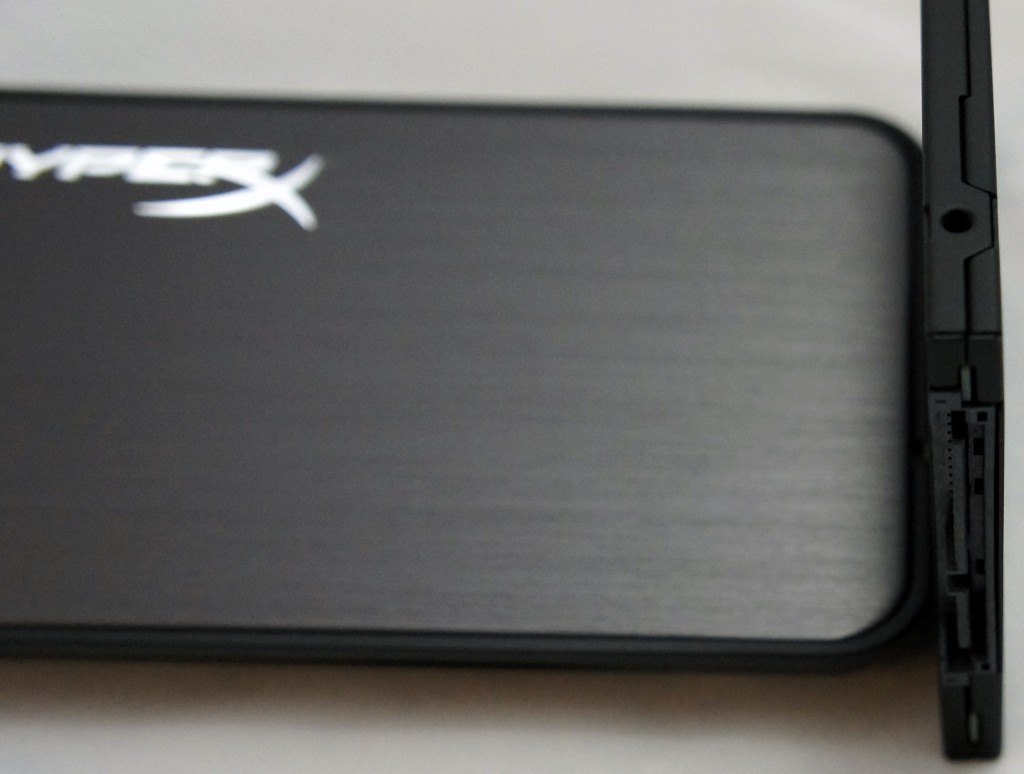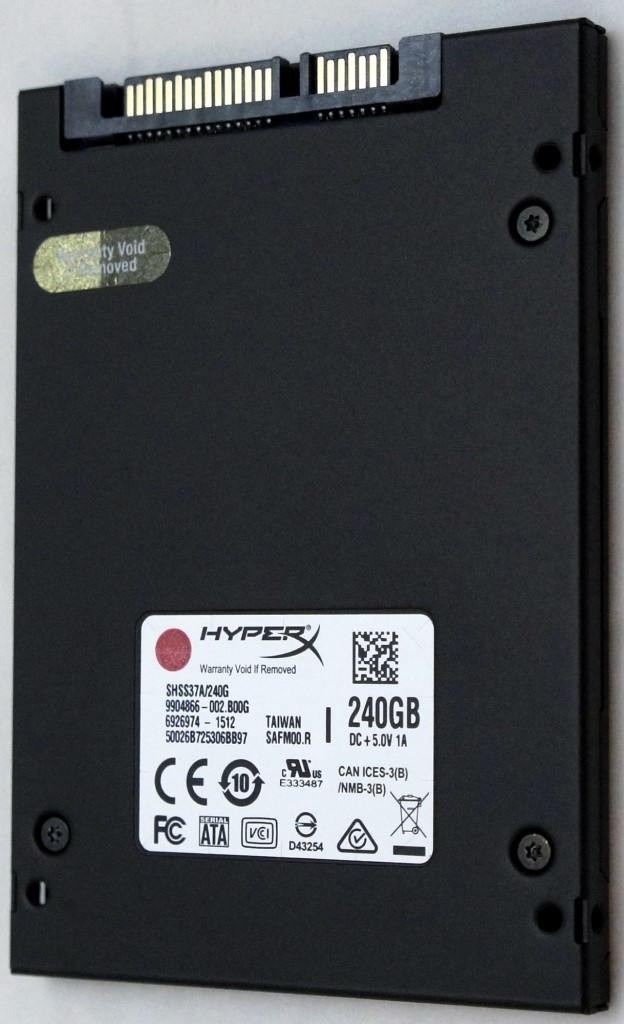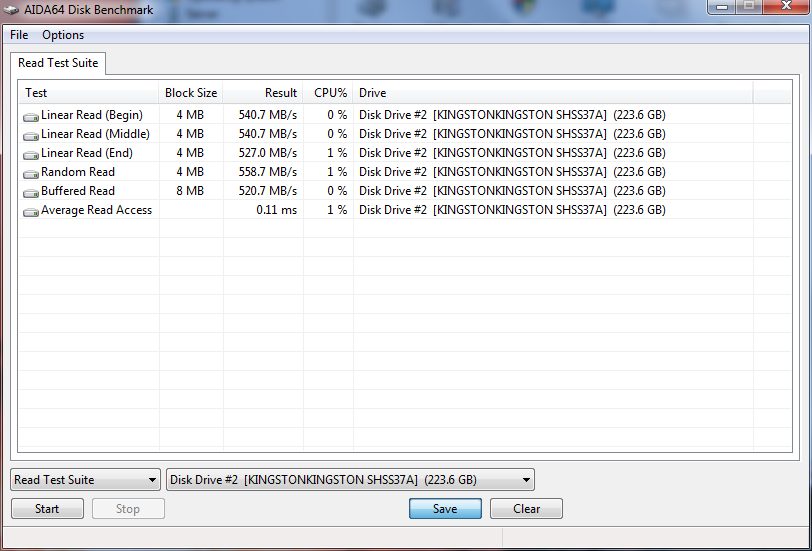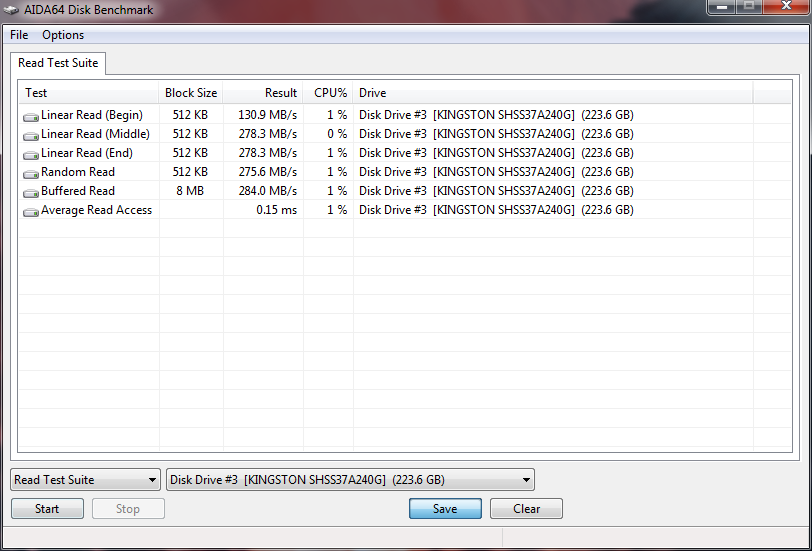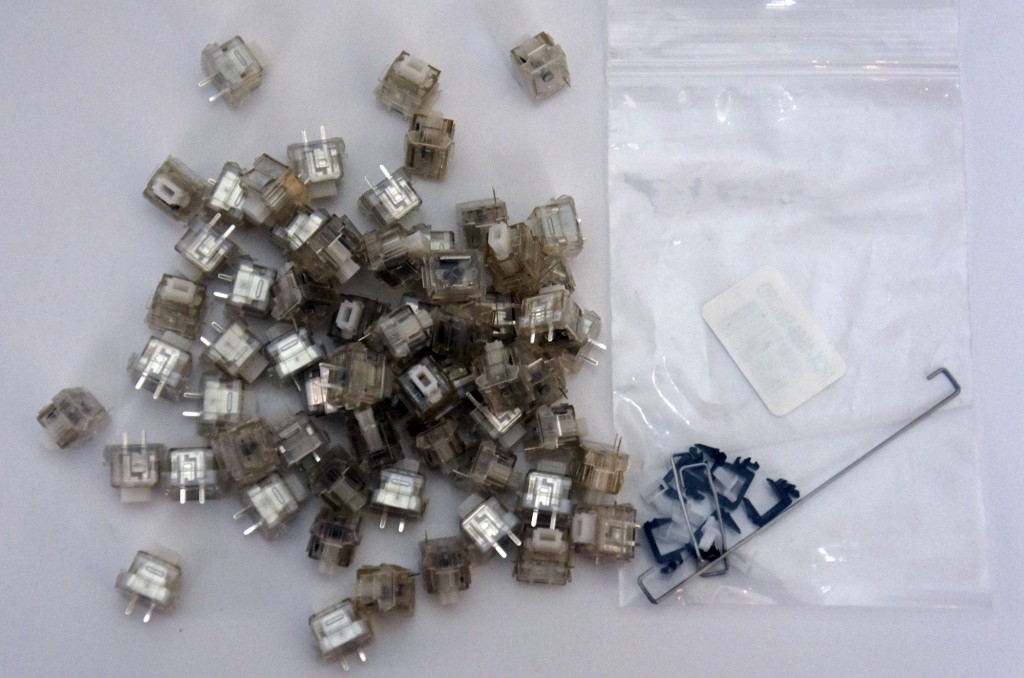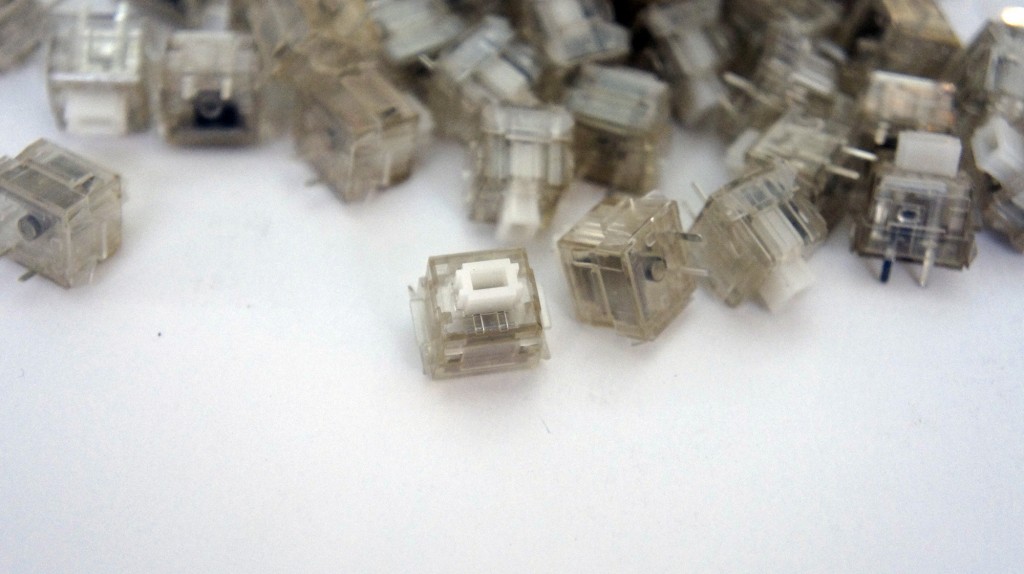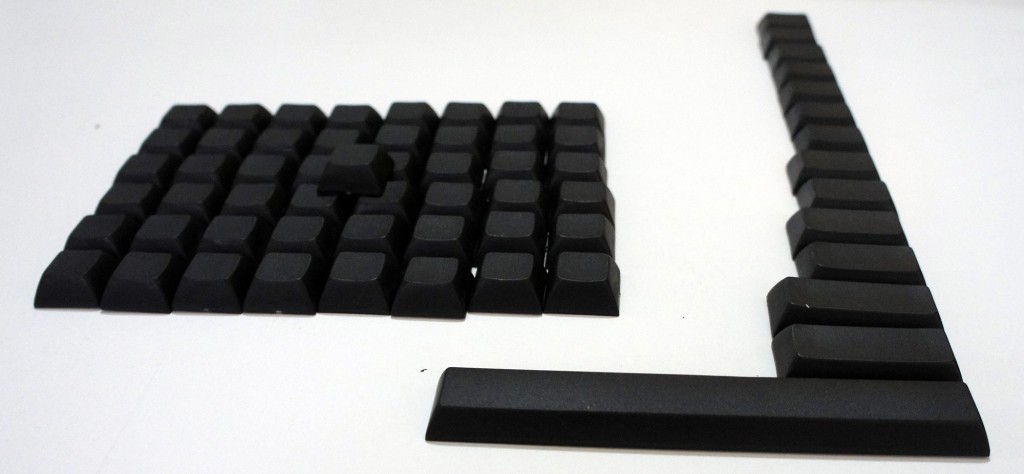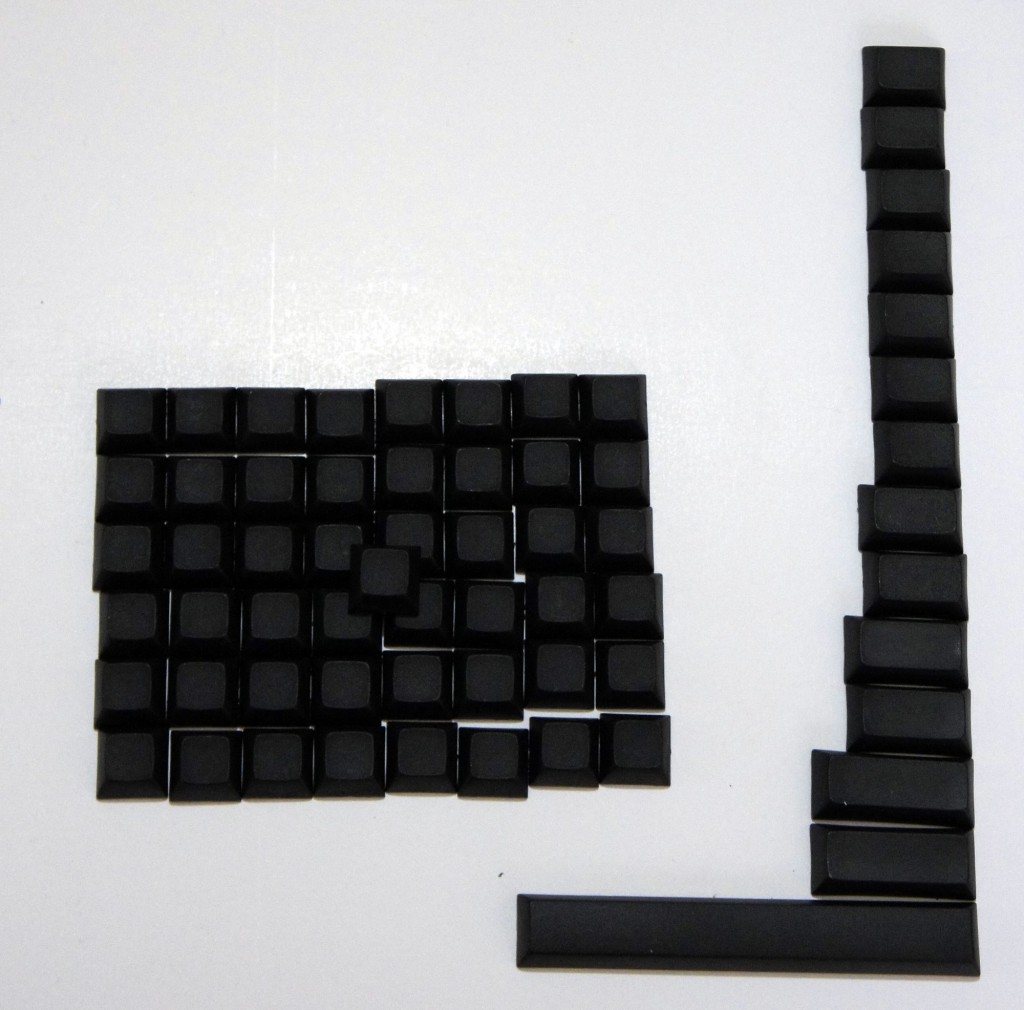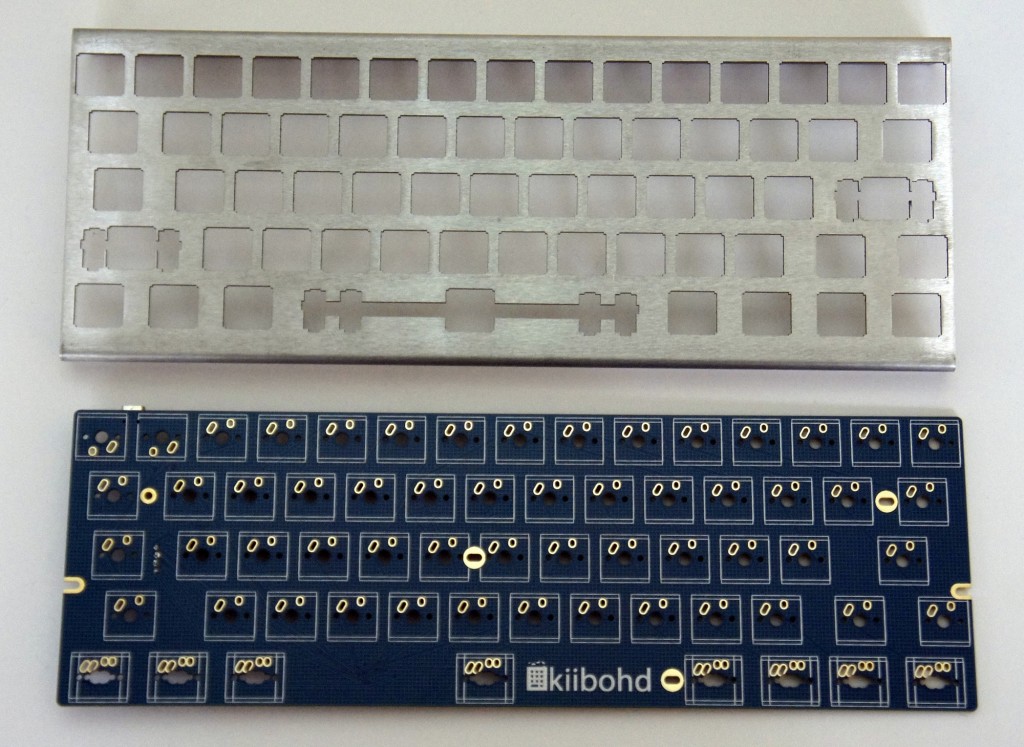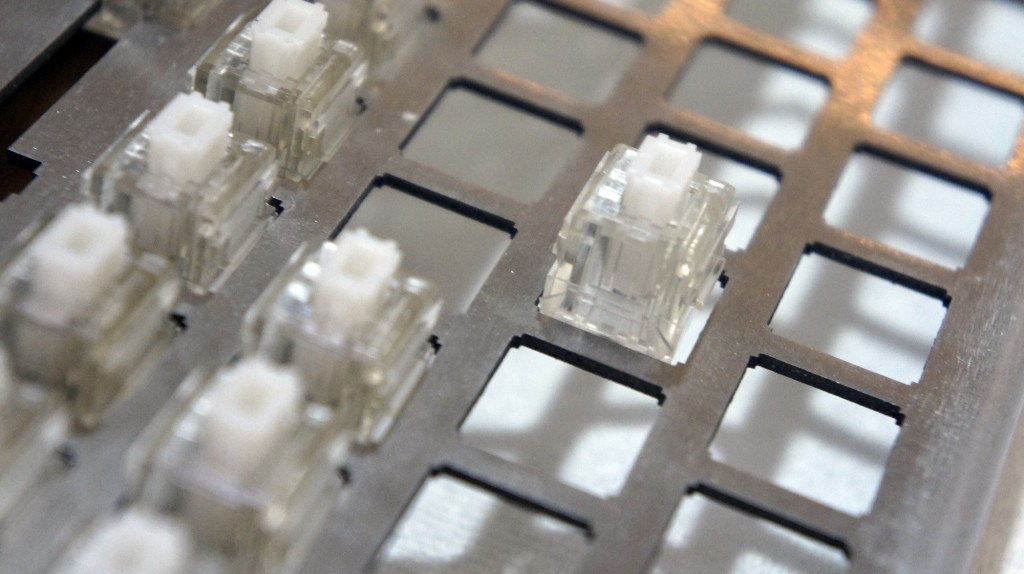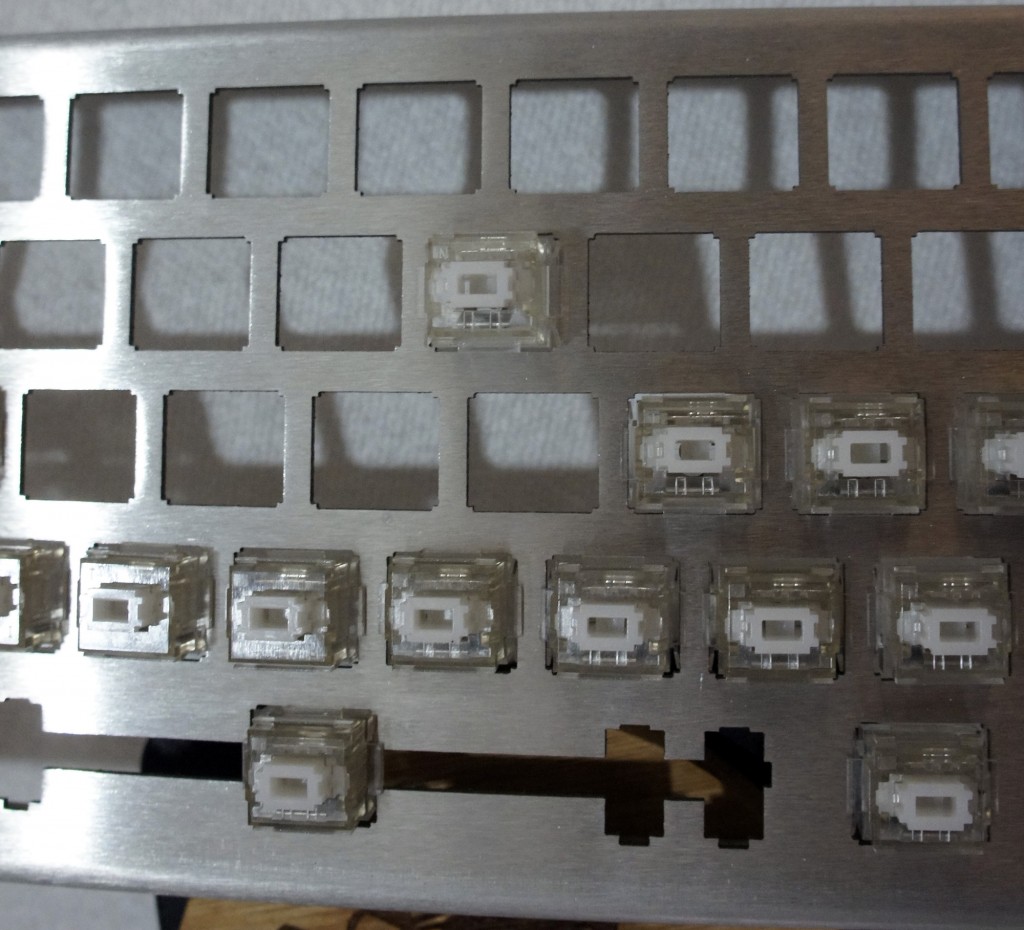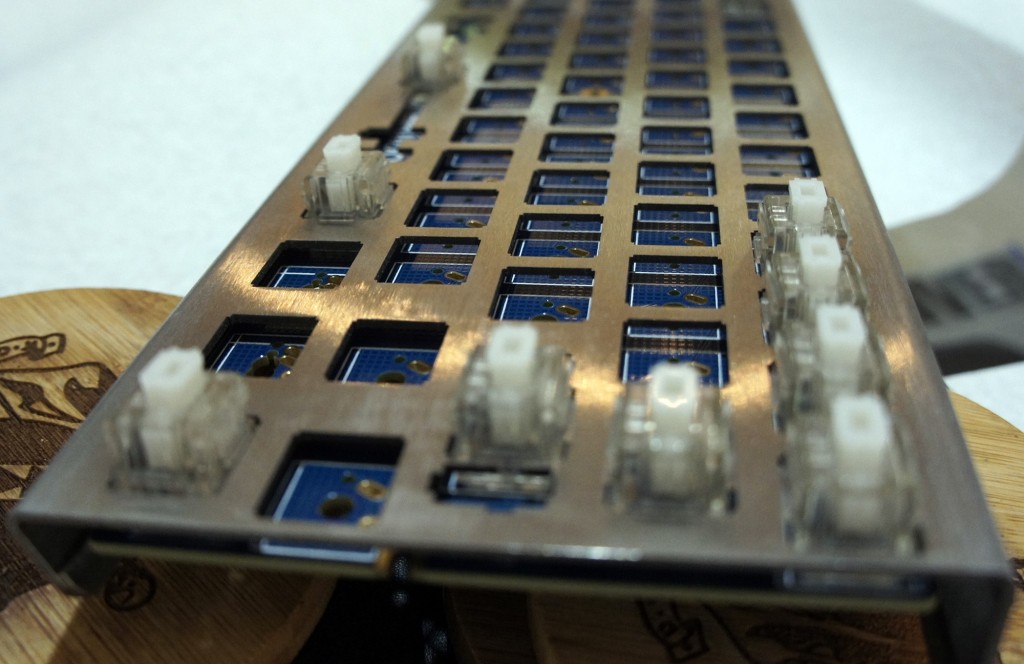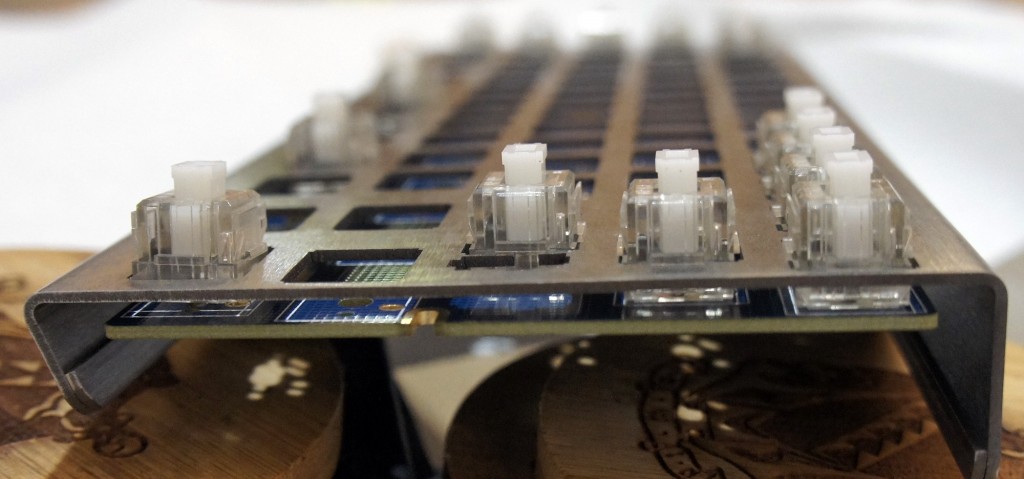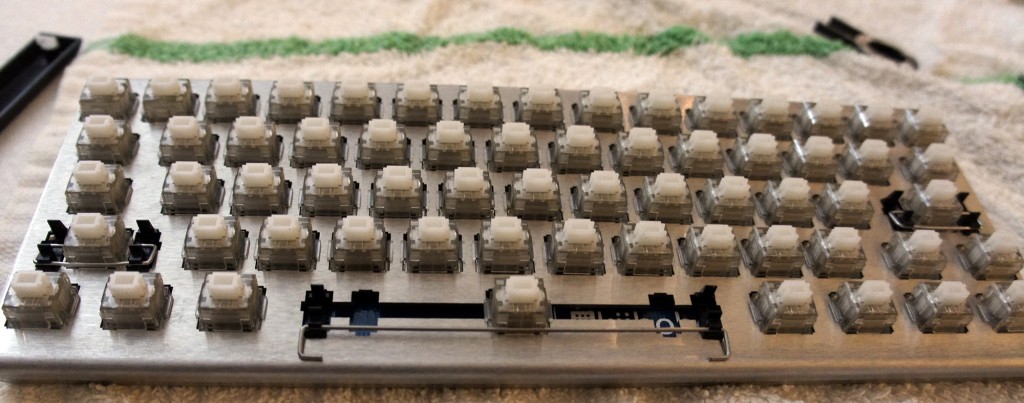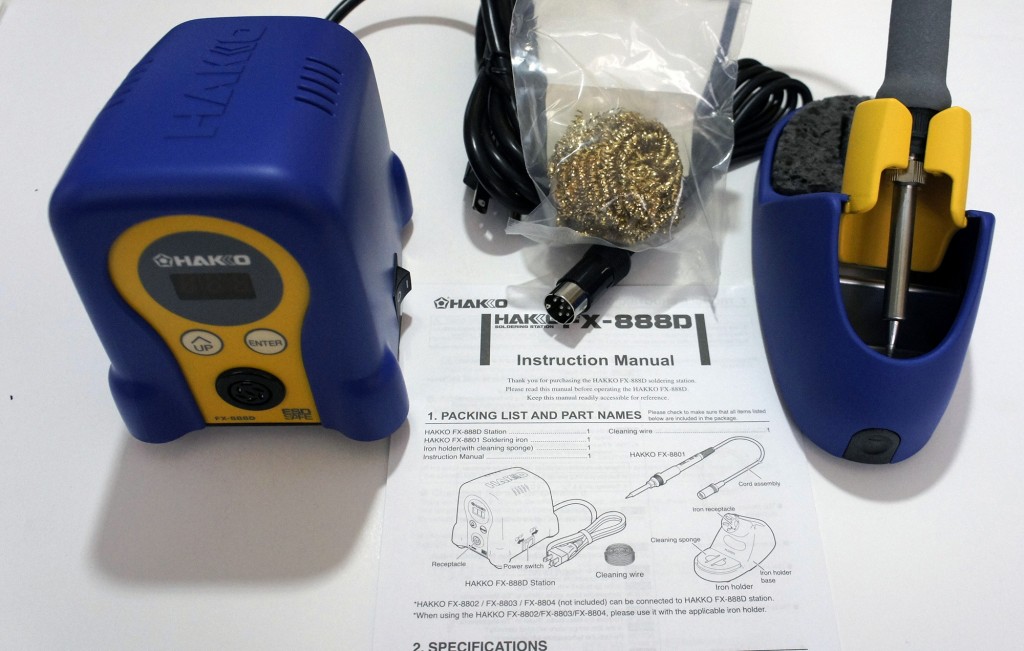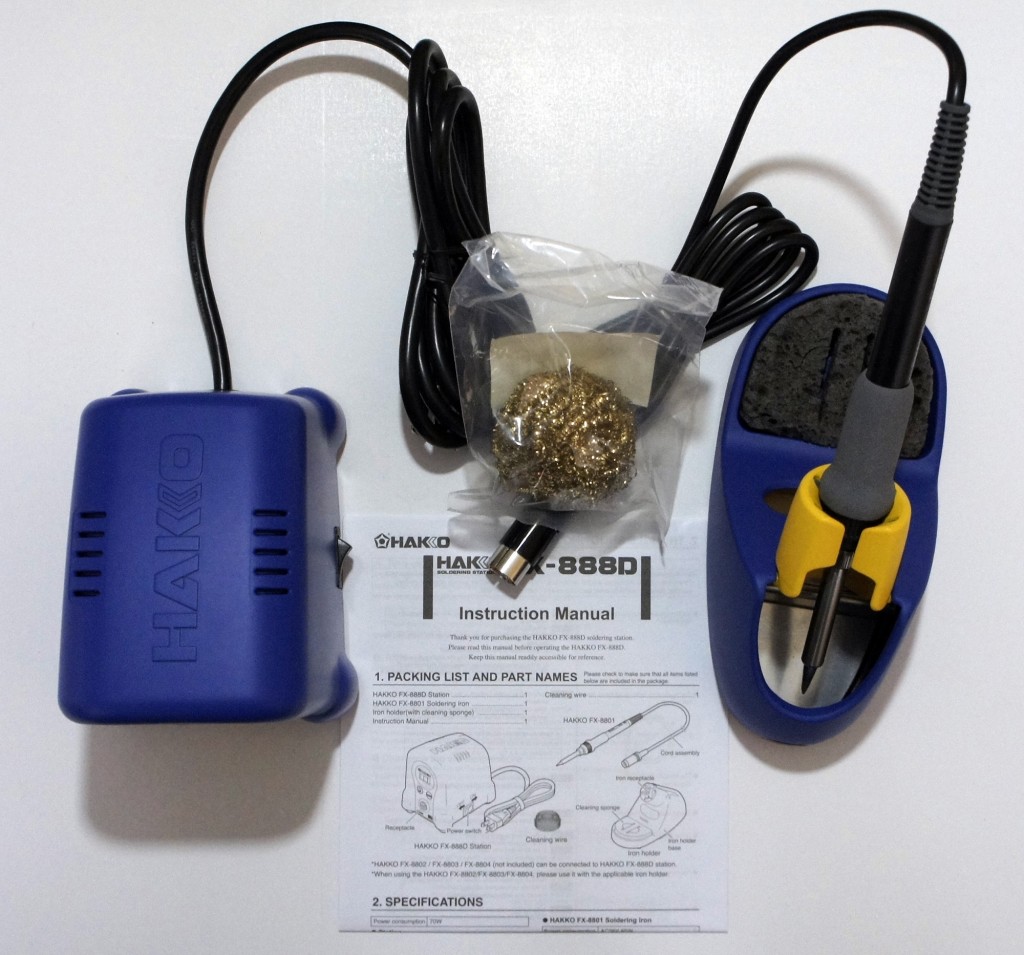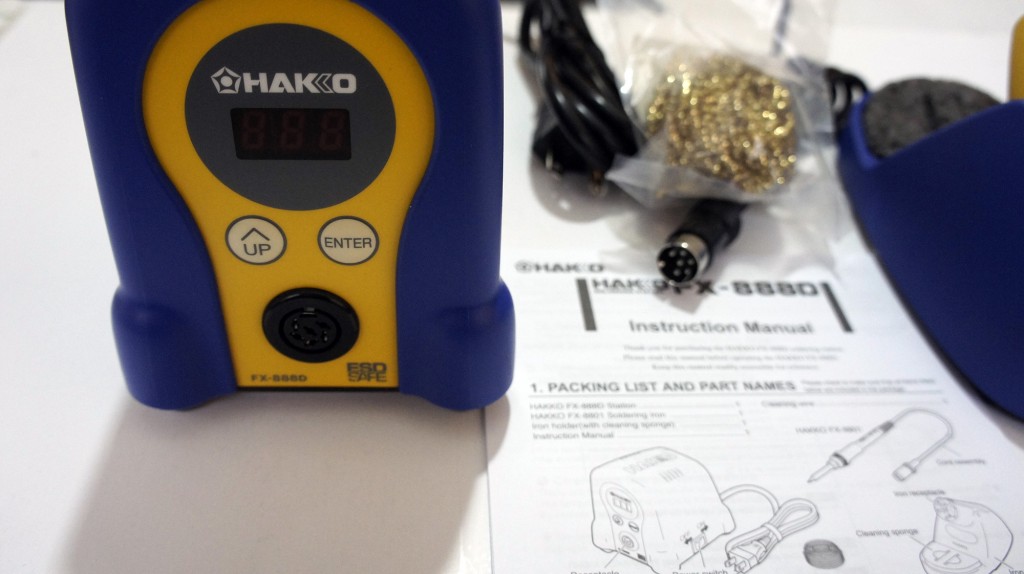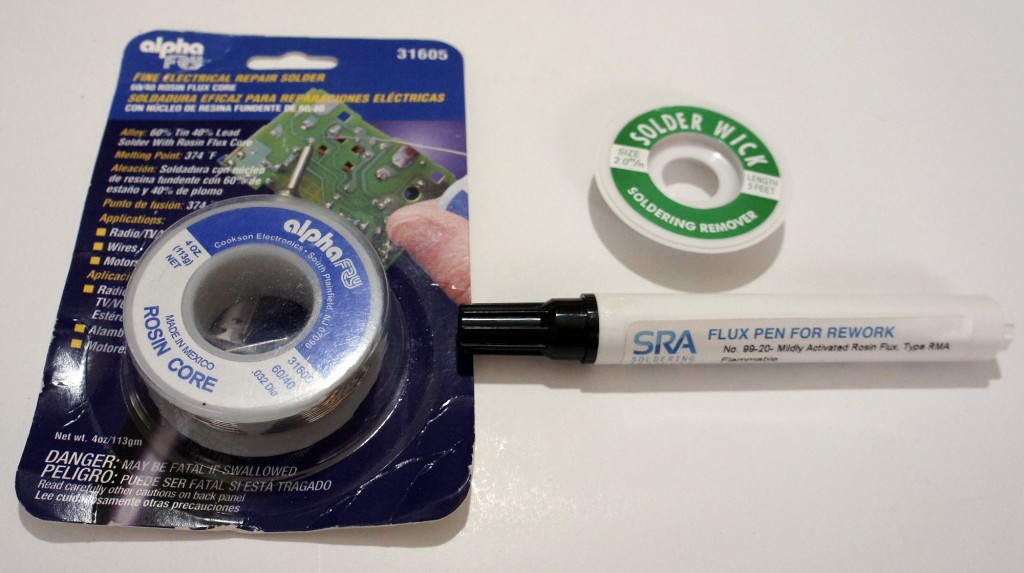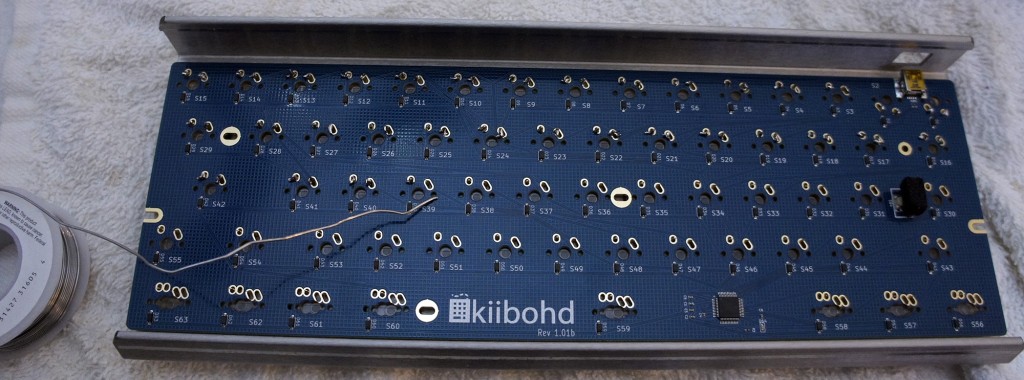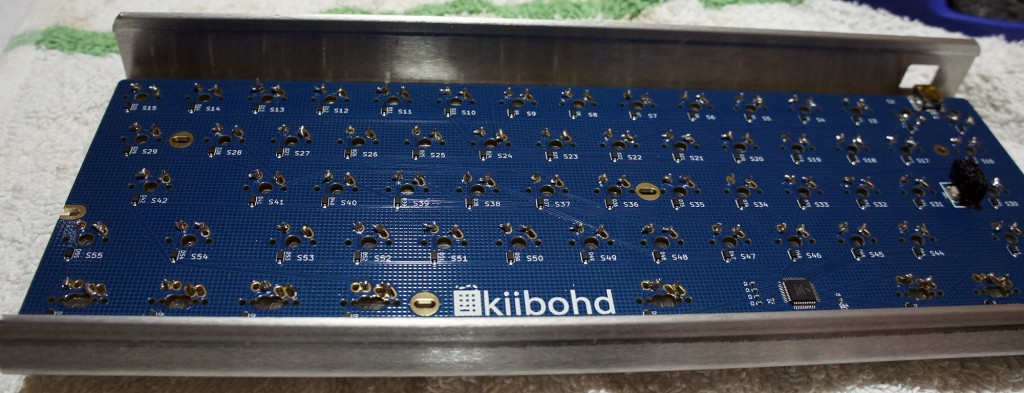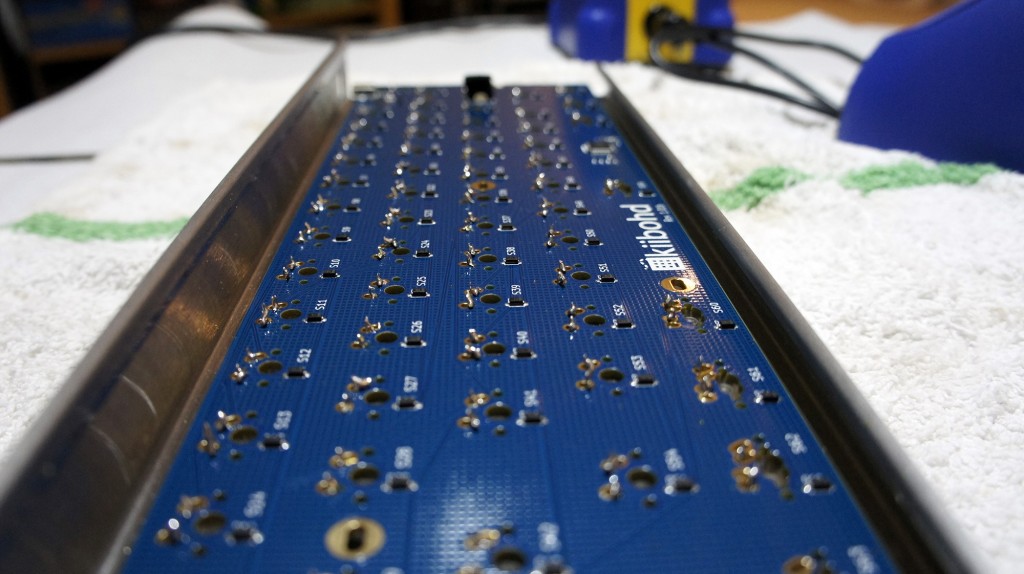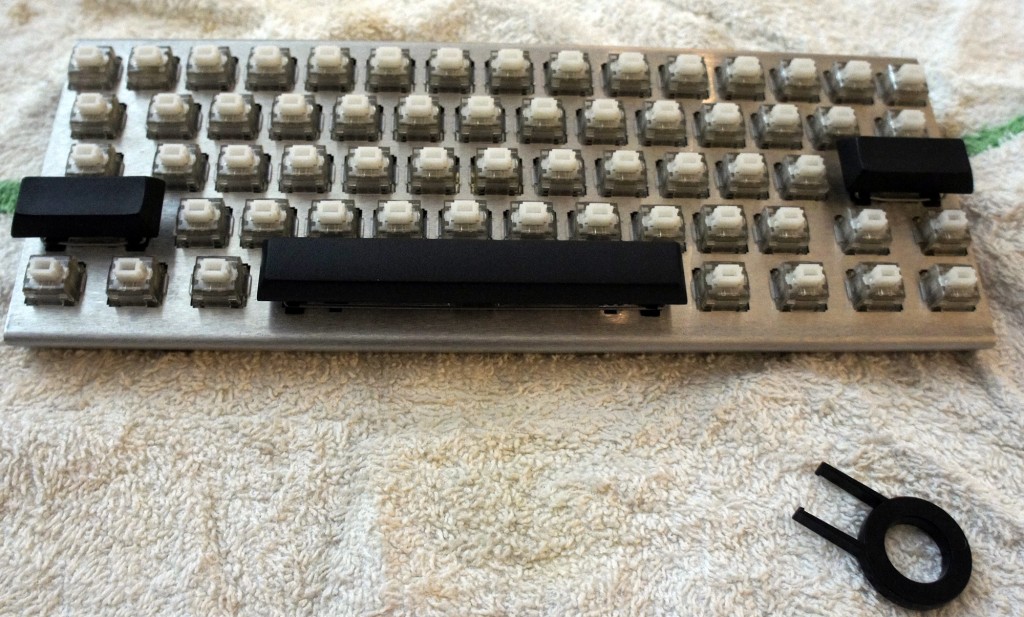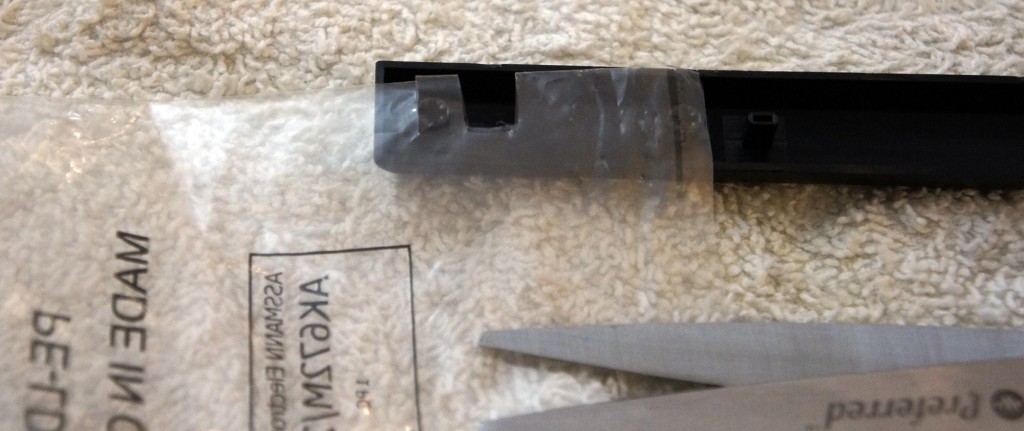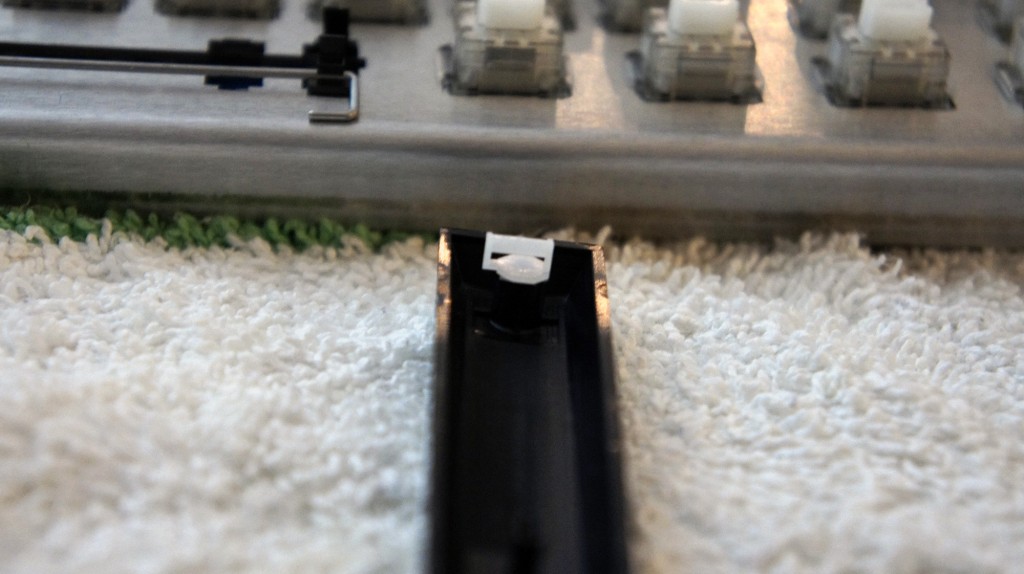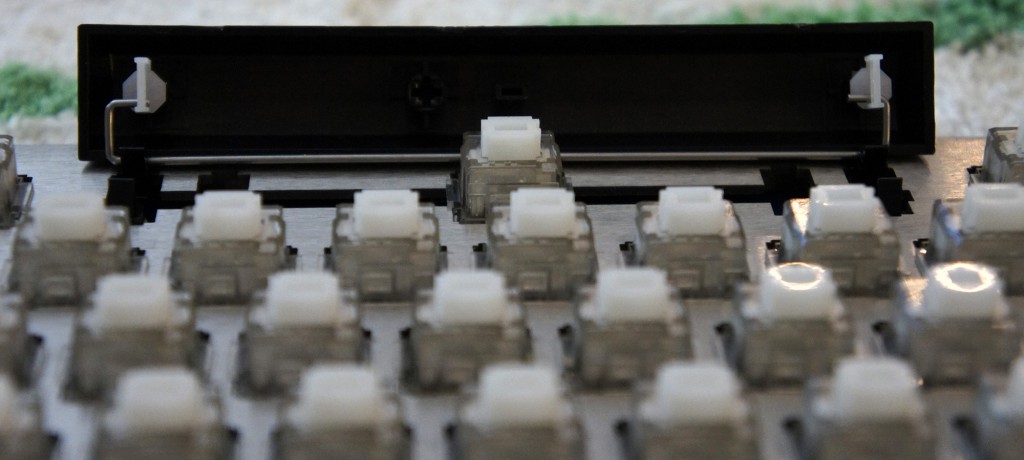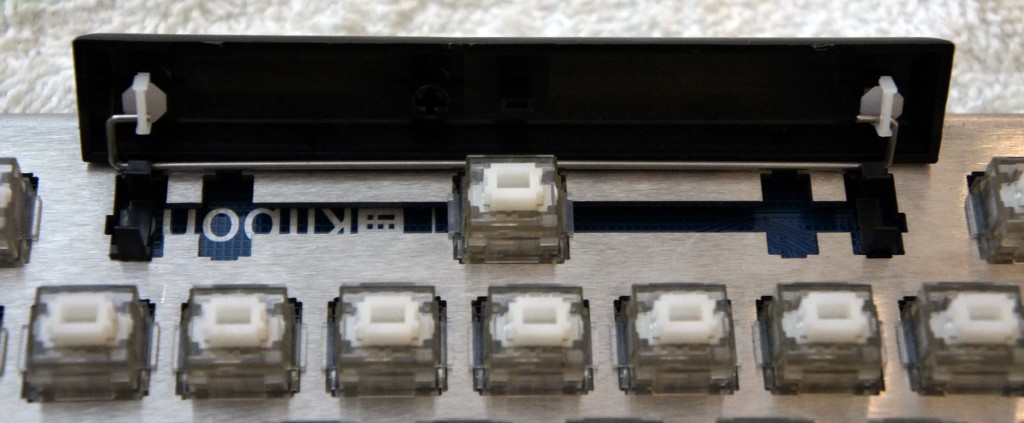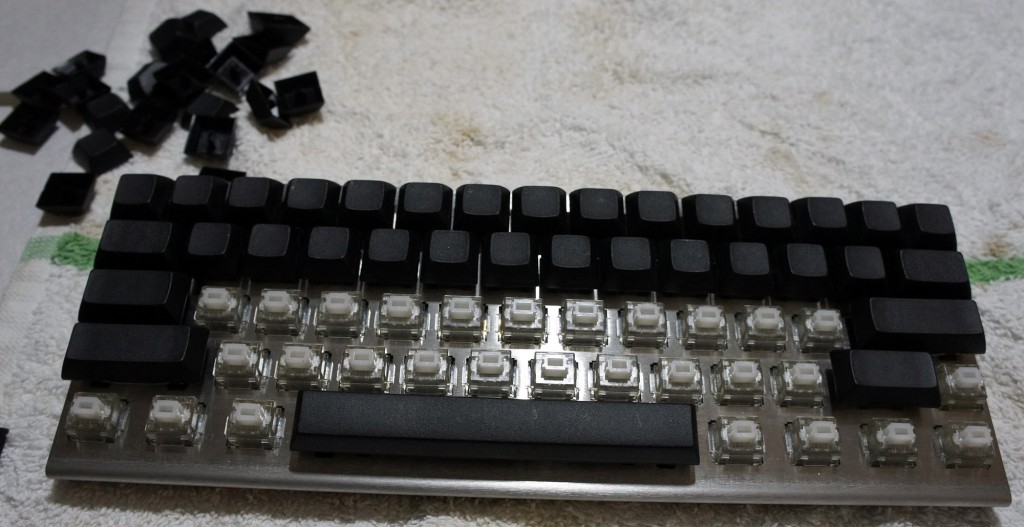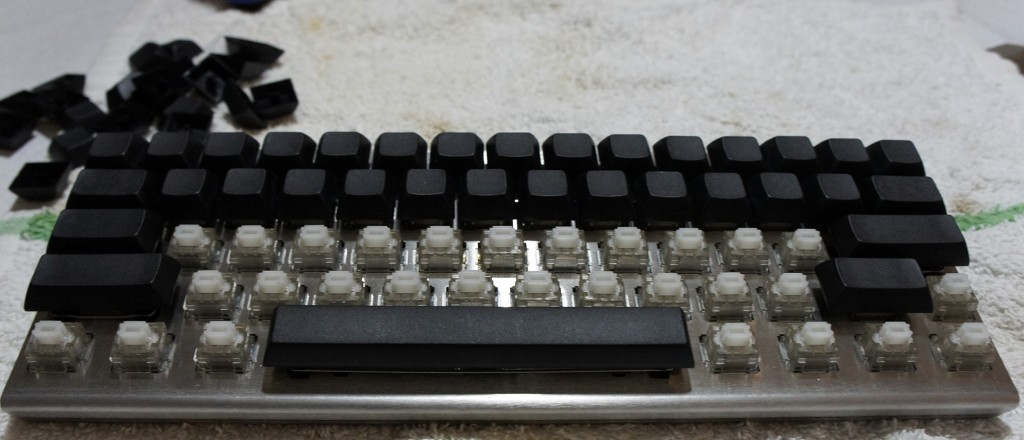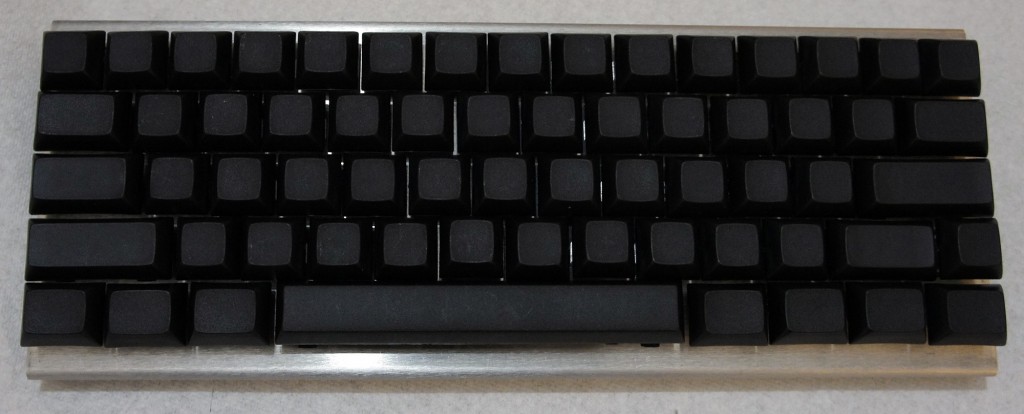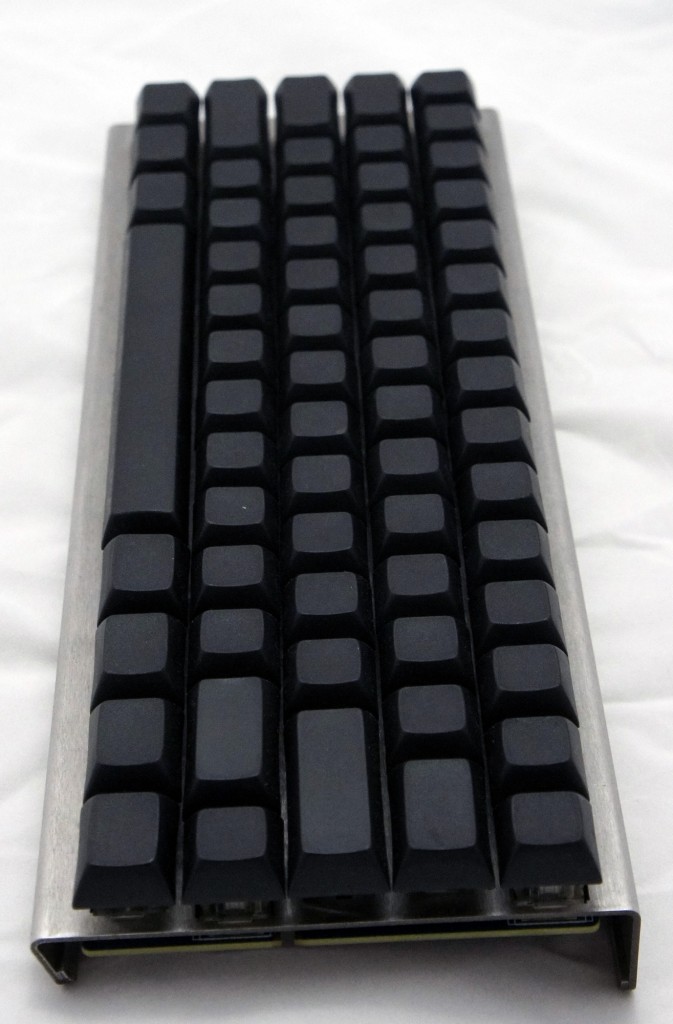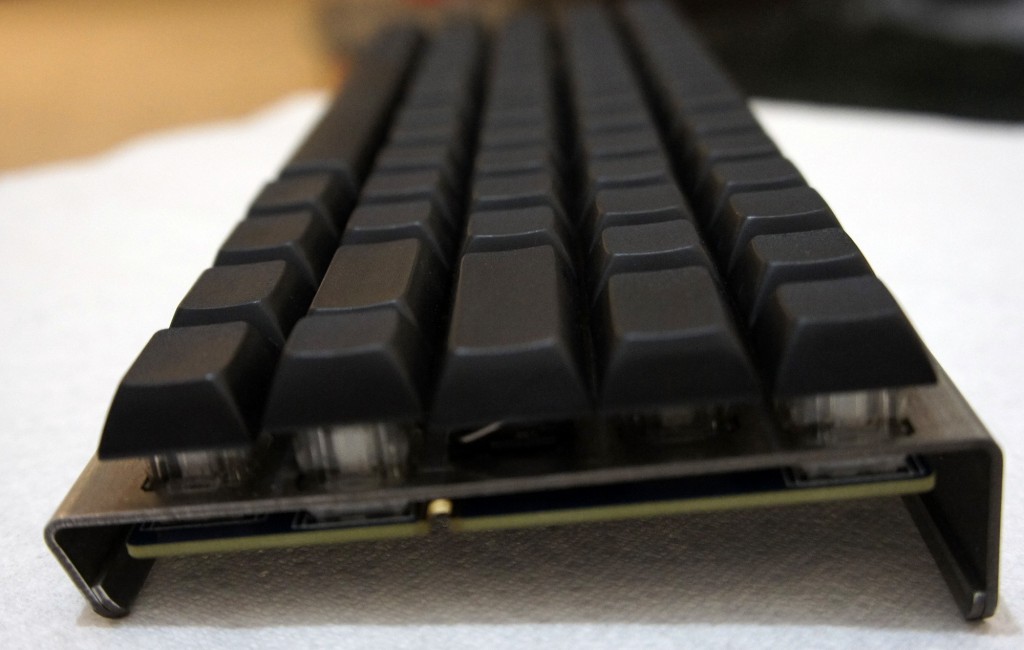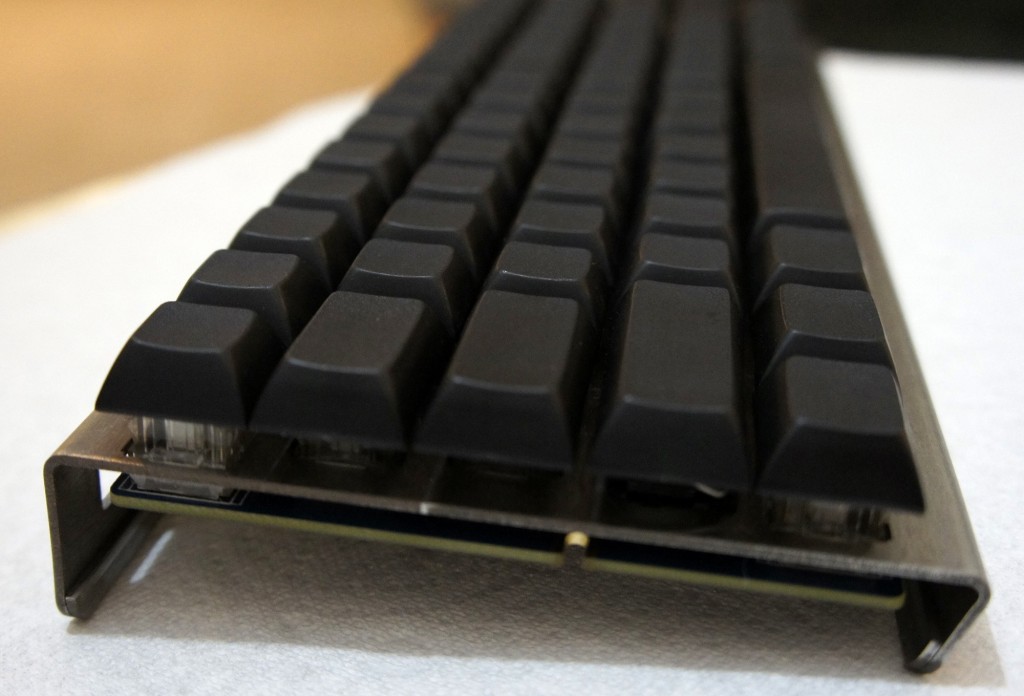Kilroy Joins the Army – Part XI – Non Trainer Status
My friend and fellow Not Operator author, Kilroy, said he was joining the US Army last year. We realized that his experiences would make for an interesting read, especially when there are so few online writings about what it is like, emotionally and physically, to experience modern basic training and beyond. He agreed to keep a journal of his time, and that we would publish it to Not Operator.
Kilroy tends to write his personal journals with pretty purple prose, so with his permission, I’ll be editing and paraphrasing his journal a bit to make it an easier read, with the help of my other friend and fellow Not Operator author, Michael. I’ll also be adding comments of my own in bold brackets [like this] to provide some extra context when necessary. If there’s large enough demand for it, we will post the full, unedited, version of Kilroy’s journal. To avoid making Kilroy’s experiences one giant wall-o-text, the journal will be broken up into an ongoing series of articles where it makes sense to do so. Plus, with Kilroy still in the Army, the journal is far from complete.
All entries in the Kilroy Joins the Army Series can be found here.
Without further ado, welcome to Kilroy Joins the Army – Part XI – Non Trainer Status.
Day 58
Not much happened today; I just had a follow up appointment at the hospital. The class had a convoy operations course that I missed for the appointment, but it’s not as if I’d have been allowed to participate anyways.
Day 59
This morning is Victory Forge [I’ll just quote from this article to define Victory Forge: “Victory Forge is a 72-hour exercise that climaxes Army basic training at this post. The Army created Victory Forge using the Marine Corps' 54-hour-long Crucible as a model.”] and I'm just tagging along for the ride.
We'll see what I end up doing in the woods while the rest of my unit does their thing. My role as a non-trainer prevents me from joining in on the fun. In the meanwhile, I’m stuck taking care of administrative tasks and watching some of the non-training ‘chapters’ [people who quit the Army] do busy work that exists as both punishment and a waste of time.
Day 60
Today is day two of Victory Forge. It was a cold night and we’re all chilled to the core. The other non-trainers and I have been left to sit around with nothing to do but freeze until they’re ready to get moving.
I feel like I've fallen through a hole in the bureaucracy. My condition limits my ability to participate, but also grants me a unique perspective into how BCT is run from an administrative level, along with the dynamic and interactions between the Drill Sergeants themselves.
Even more people have gotten injured now. The National Guard girl I noticed when I first started has been dropped out of BCT with a popped hip. It's sad to see so many going down like this. I hope my next time through BCT I manage to make it through without injury.
Day 61
We had another freezing night. Thankfully, I was granted a small reprieve during the day by being sent out of the cold and into a medical appointment that took me out of the field. Day three of Victory Forge appears to be comprised of more drills and a tent setup.
Day 62
Today is day four of Victory Forge. We were allowed to sleep in the tents on cots last night. The night was not as cold as the previous few, but it still made for a miserable experience.
Alpha Company’s Drill Sergeants continue to emphasize how bad the company is, giving speeches and more physical training exercises.
The cold makes the pins in my leg shrink at a different rate than the bone – causing me pain and tightness in the leg. I've also run out of Percocet, so the pain is very noticeable.
My daily activities are limited. What little time I do have to spend with the platoons is comprised of doing nothing because of the condition I'm in.
[Later that day, Kilroy continues below]
The rest of the company is doing their 10 mile march towards the end of Victory Forge. I've been driven back to wait with the other non-trainers and to help set up for rites of passage.
At this point, I’m looking forward to the 30 days I’ll get of Con Leave. I hope I'll be able to maintain some of the friendships I've formed here. The end of BCT will be bittersweet. I'm happy for and proud of my comrades and friends, but I’m disappointed that I wasn't able to complete the final challenges with them.
For now, I'm down but not out. In due time I'll be able to come back and finish this, but right now – in this present moment – I'm no better than those who quit and those unworthy to serve.
The sergeants and captains assure me I'll do just fine when I return because my personal resolve will get me through it, but at the same time I'm tired of the fact that everything I do seems to be an uphill battle.
Day 63
Thanks to Army bureaucracy, I've been delayed in my return home. I'm currently scheduled to go home five days from now. I've really said all that can be said about bureaucratic inefficiency in the Army.
My days are significantly more boring now that training is winding down. With no training exercises to tag along for, or tasks to assist with, I have increasingly less to do.
In truth, I’m growing more anxious for the small modicum of freedom that will come with my leave. I still feel somewhat shell-shocked in a way about the situation – I remain outwardly positive but inwardly numb.
Part of me does want to quit – the feeling is ever-present. The thought of being done with this whole mess sits in the back of my mind. However, I continue inexorably onward, that part of my mind turned off as I keep moving forward.
Day 64
There was an interesting thing that happened today. During the downtime of outprocessing, I met a man of legend in the latrine.
We had heard rumors of Bravo Company finding two people having sex behind one of the storage sheds. I thought it was just one of those stories people tell as a funny cautionary tale, but apparently this was the guy.
I asked him why he was still here, and he told me they had allowed him to continue on through Victory Forge without any notice aside from a counseling statement (DA Form 4856). Unfortunately, afterwards they informed him that he and the girl he was having sex with would be chaptered out of the Army.
Day 65
Today was Graduation Day practice. I've been relegated again to sideline “duties” doing Weapons Guard, which requires you to literally sit next to a stack of rifles just in case someone runs up and tries to steal one.
Day 66
This is the final Sunday at BCT. I should be gone by now, but because of that bureaucratic hiccup I’m still stuck here. Not much to do and not much to say about it.
Day 67
I have mixed feelings about still being here. On the one hand, I've been given more time to spend with everyone, but on the other hand, it emphasizes the miserable feeling of ennui and being left behind by my peers.
On a more positive note, the doctors said I should heal back fully and return to duty without issue. All this does is delay me – not kill me. If it plays out like that, it’ll end up being a minor speedbump in my military career.
Day 68
Separation anxiety. I'm gone and so are they. For now, my experience is over. It's like being pulled out from the water moments before drowning – the reality of the world at large rushing in with ragged breaths as everyone around reassures you. My journey in this moment must be alone.
The test of fortitude against a dulled heart. I made friends here, comrades. I spilled blood and tears here with them and now the show is over – the curtains close on this on this production and the audience awaits the next act expectantly. I want there to be a future in this, and yet, I'm afraid.
The idea of viewing this as complicated theater has been an apt metaphor – all of it hangs by a few threads and we wonder what amount of drama will define us. Now, the wait to go home seems to have relieved a lot of weight from my shoulders – I'm alone and allowed to meditate the only way I know how. My mind has been cluttered without end for the past two months, and now that I return home I wonder about all the things that led me here.
Every time I think my situation is about to improve I seem to be dumped into a fresh new hell. I’ve been put into the holding battalion at the 120th. It is like the other parts of Reception, but even more depressing. I only hope my stay here will be as short as possible.
The Reception Holding Battalion (Reception Holding Unit, in 120th AG battalion) is near where Reception is, and the buildings have the same build quality as a seedy 1960’s motel.
We are “guaranteed” four hours of sleep but are given more. The rest of the time here is just filled with boredom.
I already miss the people I have come to know during Basic Training.
Day 69
Sweet freedom. I’ve left the Reception Holding Unit behind me and have set out on my way home.
I arrived at Columbia airport with two others who are headed home as well – we’ve already gone our separate ways and I’ve been catching up on what’s been going on with my friends through the magic of social media.
I’m conveniently heading out for Con Leave on Family Day, experiencing the lows of being injured and alone while my cohorts spend the day rejoicing with their families.
This ends Kilroy Joins the Army – Part XI – Non Trainer Status. The next article will be a bit different, as it covers Kilroy’s Con Leave, but will written by me from my perspective. Stay tuned for Kilroy Joins the Army – Part XII – Con Leave.
Review: Kingston HyperX Savage SSD
Solid State Drives (SSDs) have recently become a vital component of most new PC builds. They provide speeds that traditional spinning hard drives can only dream of, and have already reached the limits of what the SATA3 (SATA 6Gb/s) specification is capable of handling.
Despite these improvements, innovation is still occurring within the world of SATA3-based SSDs, even as PCIe-based SSDs have begun to gain more traction.
The latest controller to hit the market is the Phison PS3110-S10, which is a quad core, eight channel, twelve syllable (including the hyphen) controller.
This Phison controller is utilized in Kingston’s latest SSD, the HyperX Savage SSD, which is the fastest SATA-based SSD they produce. The new Savage SSD is replacing the well-regarded HyperX 3K drive.
Kingston sent Not Operator the 240GB version of the HyperX Savage SSD. While I didn’t expect much other than the drive, the SSD package actually came with a few extra items.
Technically, the package we were sent is referred to as the “HyperX Savage SSD Upgrade Bundle Kit”. The 240GB kit is model SHSS3B7A/240G and includes the following items:
- HyperX Savage SSD (in this case 240GB)
- USB 3.0 Enclosure
- 5” Bracket and Mounting Screws
- SATA3 Data Cable
- Multi-bit Screwdriver
- 7mm to 9.5mm Adapter
- Acronis Data Migration Software
The inclusion of these items is definitely appreciated, as purchasing all of them separately would end up costing a fair bit. Individually, the 2.5” USB 3.0 enclosure would cost around $20, the SATA3 cable would probably be something like $4, the screwdriver would be at least $4, and the Acronis True Image software goes for $40.
In total, those items alone would end up costing a minimum of $68. I’ll come back to this figure in the value portion located in the conclusion below.
Specifications
The specifications for the Kingston HyperX Savage SSD are below:
- Form factor: 5"
- Interface: SATA Rev. 3.0 (6Gb/s) – with backwards compatibility to SATA Rev. 2.0 (3Gb/s)
- Capacities: 120GB, 240GB, 480GB, 960GB
- Controller: Phison PS3110-S10
- Baseline Performance
- Compressible Data Transfer (ATTO):
- 120GB — 560MB/s Read and 360MB/s Write
- 240GB, 480GB, 960GB — 560MB/s Read and 530MB/s Write
- Incompressible Data Transfer (AS-SSD and CrystalDiskMark):
- 120GB — 520MB/s Read and 350MB/s Write
- 240GB — 520MB/s Read and 510MB/s Write
- 480GB — 520MB/s Read and 500MB/s Write
- 960GB — 520MB/s Read and 490MB/s Write
- IOMETER Maximum Random 4k Read/Write
- 120GB — up to 100,000/ up to 84,000 IOPS
- 240GB — up to 100,000/ up to 89,000 IOPS
- 480GB — up to 100,000/ up to 88,000 IOPS
- 960GB — up to 99,000/ up to 89,000 IOPS
- Random 4k Read/Write:
- 120GB — up to 93,000/ up to 83,000 IOPS
- 240GB — up to 93,000/ up to 89,000 IOPS
- 480GB — up to 92,000/ up to 89,000 IOPS
- 960GB — up to 97,000/ up to 89,000 IOPS
- PCMARK® Vantage HDD Suite Score:
- 120GB, 240GB, 480GB, 960GB — 84,000
- PCMARK® 8 Storage Bandwidth:
- 120GB, 240GB, 480GB — 223MB/s, 960GB — 260MB/s
- PCMARK® 8 Storage Score:
- 120GB, 240GB, 480GB — 4,940, 960GB — 4,970
- Anvil Total Score (Incompressible Workload):
- 120GB, 240GB, 480GB — 4,700, 960GB — 5,000
- Power Consumption: 39W Idle / 0.5W Avg / 1.4W (MAX) Read / 4.35W (MAX) Write
- Storage temperature: -40°C~85°C
- Operating temperature: 0°C~70°C
- Dimensions: 0mm x 69.9mm x 7.0mm
- Weight: 120GB, 240GB, 480GB — 96g, 960GB — 92g
- Vibration operating: 17G Peak (7–800Hz)
- Vibration non-operating: 20G Peak (10–2000Hz)
- Life expectancy: 1 million hours MTBF
- Warranty/support: 3-year warranty with free technical support
- Total Bytes Written (TBW):
- 120GB: 113TB 0.89 DWPD4
- 240GB: 306TB 1.19 DWPD4
- 480GB: 416TB 0.81 DWPD4
- 960GB: 681TB 0.66 DWPD4
- Compressible Data Transfer (ATTO):
Kingston already provided benchmarking figures in their specifications sheet, but as the responsible tech reviewer that I am, I felt compelled to obtain my own. In reality, I took the benchmarks before I realized Kingston provided them, though I suppose it’s always good to do as Reagan would and “trust but verify”.
I ran two rounds of a series of three benchmarks: one round was conducted with the SSD connected via a SATA3 port on a Gigabyte Z87X-UD5H motherboard, and the other round was performed with the SSD connected via a USB 3.0 port on the same motherboard.
CrystalDiskMark
The first benchmark run was CrystalDiskMark 3.0.4 (64-bit).
Connected through SATA3, the results were basically what I expected, and confirmed what Kingston listed on their spec sheet.
When using USB 3.0, there was a significant drop in speed despite the fact that USB 3.0 can theoretically handle 5Gb/s (compared to SATA3’s 6Gb/s). Oddly enough, the write speeds ended up being about 3x faster than the read speeds. Not sure why.
AIDA64
The second benchmark was the AIDA64 Disk Benchmark.
Again, using SATA3, the results were as expected and matched Kingston’s expectations.
USB 3.0 speeds didn’t quite match up with what CrystalDiskMark measured. However, AIDA64 only measures read speeds using 512 KB blocks. Based on those figures, it seems like CrystalDiskMark bases its results on what AIDA64 identifies as “Linear Read (Begin)”, though the drive clearly performs better in every other category.
Jackie Chan Benchmark
The third and final benchmark was a use case test. I put a Blu-Ray copy of Jackie Chan’s 1983 film, “Project A” (Hong Kong Theatrical Cut, of course), on the SSD. The file size was 8,336,838 KB, or 8,336.84 MB, or 8.33684 GB depending on which unit you prefer to use and how much you enjoy decimals and rounding.
Using the following PowerShell command, I measured how long it took the drive to copy the movie from one folder to another.
Measure-Command {Copy-Item E:\00000.* -destination E:\folder\}
When connected via SATA3, the movie took 42.4736 seconds to copy to the new location. This means it copied at a rate of approximately 196 MB/s.
However, when connected via USB 3.0, the movie took 99.9513 seconds to copy over I suppose 100 seconds would have just been too nice and round of a number. Based on that time, the movie transferred at a rate of just over 83 MB/s.
The USB 3.0 Jackie Chan Benchmark (that’s what I’m calling it now) results were expected considering the USB 3.0 read speeds in AIDA64 were about half as much as the SATA3 ones, and the USB 3.0 write speeds in CrystalDiskMark were approximately half as fast as the SATA 3.0 speeds.
Conclusion
Overall the SSD performed admirably; the benchmarks verified what Kingston’s spec sheet expected from the drive. The package as a whole is really nice, and includes a variety of useful items that users might need when installing their new SSD.
As I mentioned above, the value of the Kingston HyperX Savage SSD is something to consider. The 240GB bare drive (SHSS37A/240G) currently retails for $110, and the 240GB drive with the upgrade kit included (SHSS3B7A/240G) is priced at $130.
At a difference of $20, unless the user would have absolutely no need for the items included in the upgrade kit, the second option seems like a no brainer. Earlier in the article I estimated that the upgrade kit items would cost AT LEAST $68 when purchased individually, and I didn’t even include every item from the kit in that estimate.
Compared to other SSDs, the Kingston HyperX Savage SSD still competes well on price. SATA3-based 240GB SSDs tend to range from $90-$150 depending on the drive, and the HyperX Savage sits comfortably in that range.
When considering the added value the upgrade bundle provides, the reliability associated with the Kingston brand, and the solid performance demonstrated above, the HyperX Savage SSD may seem like a great choice… because it is. Unless, of course, you’re the type of person who believes the AMD Athlon 64 X2 is the epitome of CPU technology, thinks eMachines PCs will actually be missed, and expects Rambus DRAM to eventually overtake DDR in the RAM market. If this is the case, enjoy your archaic IDE spinning hard drives. I’ll be watching “Project A” on my computer while you stare at the wall waiting for your PC to boot.
Infinity Keyboard: Building My Own Mechanical Keyboard
I’ve written a lot about mechanical keyboards in the past, but beyond user experience, I’ve never really had any other type of interaction with a keyboard. When I saw the Infinity Keyboard Kit for sale on Massdrop, I was enticed by the prospect of a keyboard with aspects that I could customize, but more importantly, the opportunity to build my own keyboard.
When I first purchased the kit, it was somewhat intimidating. As a software developer, any task remotely related to electrical engineering is a strange and scary one, but I figured I’d give it a shot anyways.
Choosing the Keyboard
I ordered the kit with Matias Alps Clicky key switches, as I’m a huge fan of Cherry MX Green switches and thought the Alps switches might provide a similar but new experience.
Next, I picked the blank Signature Plastics PBT keycaps available as an option on the Massdrop purchase, as finding Matias-compatible keycaps is not an easy task. Plus, the blank keycaps would come in handy when I started messing around with the keyboard configurations.
As for the chassis, I stuck with the purpose-built bent metal chassis, since it was designed for the Infinity Keyboard and has a nice industrial look to it.
Finally, the logic board used is a custom ‘kiibohd’ (get it? ‘kiibohd’ sounds like a British person saying ‘keyboard’, hilarious), designed to fit both Cherry and Matias Alps switches.
Getting Started
The process began with me putting the switches into the chassis. They went in from the top side of the keyboard, and the switches had to be pushed in until the little wings on the sides of the switches popped out on the bottom side of the keyboard. I could tell when they were in place because the plastic stoppers were flush against the metal of the chassis.
I made the silly mistake of putting in all the switches prior to sticking the logic board on. Unfortunately, this meant that lining up all the holes would be impossible, so I took the advice of someone on the Massdrop discussion and popped out all the key switches until I only had a couple in each corner. This made it easy to line up and stick on the board.
Once the board was in place, I began the process of sticking in the rest of the switches anew.
Soldering
The next step was soldering the switches to the board. This was probably the most daunting task to me, since I hadn’t soldered anything in approximately 10 years; the last time was in early high school, and I was hardly an expert back then.
For my soldering kit, I picked up a Hakko FX-888D, since reviews for it are exceptional and a large portion of the internet seems to recommend it.
I also picked up some rosin-core solder, with the idea that it would be 60% lead and 40% tin, at the suggestion of my electrical engineer friend. However, despite the Amazon description, when it arrived it turned out to be 40% lead and 60% tin, but I figured I’d make do. I also picked up some solder wick and flux at my friend’s suggestion, since he assured me it’d make the process easier (it didn’t, I barely even used them).
Wanting to be safe, I asked the same electrical engineer friend if some paper towels on a glass table would make for a good soldering station. He reminded me that paper towels are quite flammable, and suggested that I at least consider a slightly less flammable dish towel as a workstation. I listened to his advice and went with that.
Soldering was a surprisingly easy process. The Hakko FX-888D is a great soldering iron; I just dialed in the temperature I wanted and I was ready to go. For the purpose of the keyboard, I opted to use 500°F as the temperature.
Despite my inexperience and lack of skill, the soldering process went fairly quickly and smoothly. All I had to do was touch the iron to the spot I wanted to solder, touch the solder wire to it, and let it melt right onto the connectors as I pulled away the iron.
Once the soldering was done, I tested the keyboard to make sure all of the switches were reporting correctly. Each one worked perfectly, although my soldering job had much to be desired. Instead of nice, clean, smooth soldering, the back of the keyboard looks like a Terminator T1000 (the melty one) cried onto it. This made me regret choosing the open-backed chassis somewhat, since my soldering left the back of the keyboard sharp to the touch. I suppose I’ll just have to be careful when grabbing it.
Problems Arise
Next up was putting the keycaps onto the switches. Again taking the advice of the Massdrop discussion on the keyboard, I opted to start with the stabilized keys (spacebar, Enter key, etc).
I noticed the stabilizers that attached to the keys felt fairly loose in their housing. Luckily someone online had the genius suggestion to cut tiny squares out of the plastic baggies the parts came in, and use them as a shim for the stabilizers.
This worked beautifully, and made the stabilizers sit tightly in their housing. Although something like super glue would probably work just as well, that’s a much more permanent solution, and the name of the game with the Infinity Keyboard is modularity.
However, while putting in the spacebar, I messed up a bit and got the stabilizing wire stuck under the stabilizers. I figured I would correct this mistake by pulling out the spacebar and fixing it.
Unfortunately for me, the Matias key stems are exceptionally tight, so it took an extraordinary amount of force the get the key out (My poor key-puller just gave up, and I had to use my fingers and a screwdriver to generate enough force to remove it).
However, once I got it out, I fixed the stabilizing wire and got back to work putting on the keycaps.
Once that was done, it meant I was done building my keyboard and it was ready to be used!
As you might expect by now, I had yet another unfortunate discovery when I began to type. All the keys worked well, except the spacebar would output anywhere between 1 to 10 spaces per keystroke.
At the suggestion of the Massdrop Infinity Keyboard discussion forum, it seemed like the best course of action would be to replace the key switch on the spacebar, as it had been speculated that maybe I damaged it when I removed the spacebar from it earlier.
Luckily for me, the keyboard kit included one extra key switch.
I figured the de-soldering process wouldn’t be much more difficult than the soldering process, but boy was I wrong.
The wick I had gotten barely soaked up any solder, and the solder was starting to get stuck in the holes in the logic board. As soon as I would melt it with my iron, it would solidify as soon as I started trying to push the switch out.
Eventually I pulled off enough solder to push the switch out, and replaced it with my backup switch. At this point I tested the keyboard with the new switch, and it worked flawlessly.
Now that I knew what I was doing, I was ready to put the spacebar onto the new switch and get typing.
However, nothing is that simple, and although I attached the spacebar without issue, the key tended to stick at the bottom of my keystrokes. This meant that I still ended up with unwanted spaces, although in some cases it meant I couldn’t hit the spacebar again when I wanted to.
At this point, I was out of extra key switches, and I knew that the force required when trying to remove the spacebar to try to diagnose the issue would cause the switch to break. I contacted Massdrop customer support to get some replacement switches and, hopefully, some advice.
They recommended trying to expand the spacers on the stabilizers, but that didn’t work. It also didn’t help that the spacebar appeared to be making contact with the keys directly above it and seemed somewhat out of alignment along the bottom.
I figured that maybe the spacebar was upside down, though the instructions never made mention of an ‘up’ and ‘down’ on the spacebar. Then again, the instructions were about as specific and helpful as a car-building manual comprised of useful steps along the lines of “get engine, put engine in car, apply wheels, finish car.”
Massdrop was kind enough to send me a free replacement key switch in preparation for the switch I was about to break. I also asked them send me a second backup switch in case I somehow managed to destroy the first backup, in case you are noticing a pattern here.
I removed the spacebar and switch using a soldering iron to loosen up the solder on the switch, pliers to pull the key switch out of the chassis, paperclips that were bent out of shape to pull on the spacebar, and my own tears of frustration. The tears were mostly a side effect, though I suppose they might have added some extra lubrication to the whole endeavor.
Once that was done, I put the new switch in the chassis, and plugged the keyboard in to test it and make sure everything worked properly.
After I was satisfied that the switch was fully functional, it was time to put in the spacebar.
I made sure the spacebar was flipped from the orientation it was in before (upside-down presumably). I attached the stabilizing wire to the stabilizers on the spacebar, and pushed it into place on the key switch.
To my dismay, the spacebar stuck at the bottom of the key press.
I immediately felt sheer terror at the nightmarish thought of having to remove the spacebar and key switch yet again.
In an act of desperation, I took a flathead screwdriver and pushed the one of the spacers out, certain it wouldn’t work.
To my amazement, the spacebar now moved freely.
Feeling like Thomas Edison probably felt when he pretended that he invented the lightbulb, I plugged the keyboard in to test each key.
My feeling of elation was quickly quashed as the “1” key didn’t seem to register key presses. The fear of having to replace a key switch was back almost as soon as it had gone. Feeling like I had eaten some bad Indian food, the sensation of fear in my gut returned as quickly as it had faded.
It looked like the soldering on the switch seemed ok, but given my complete ineptitude when it came to soldering, I figured I would melt it down a bit more to make absolutely certain it was making contact with the board.
A few seconds later, I plugged the keyboard back in, and finally everything worked properly.
I knew at the time that I should be feeling pride and joy for having completed my project successfully, but one singular thought consumed my mind: “never again”.
Conclusion
I got the Infinity Keyboard kit at a price of $157 after tax and shipping, with the intention to use it as a learning opportunity as well as benefit from having a rather unique 60% keyboard.
(A brief aside – keyboards tend to come in a few different sizes, most commonly: Standard, which includes all the typical keys, Tenkeyless [TKL], which excludes the number pad, and 60%, which excludes the number pad, arrow keys, and Home/Insert/Page Up/etc. keys.)
I certainly got my money’s worth as far as learning experience goes, though I was hoping the process would have been a bit more painless (emotionally and physically). I ended up with a fairly unique keyboard though, which I’m sure will impress all the people I know. It’s a known fact that nothing impresses people more than a keyboard.
At least the next time I build a keyboard (never), I’ll know what I’m doing. Also, as far as the key configuration goes, I have the option to compile my own firmware (as a software developer, this option disgusts me), use the default (as an enthusiast, this option disgusts me), or use the new Infinity configurator (as a lazy person, this option disgusts me). Oh well. I guess into the closet it goes.
Kilroy Joins the Army – Part X – Med Quarters
My friend and fellow Not Operator author, Kilroy, said he was joining the US Army last year. We realized that his experiences would make for an interesting read, especially when there are so few online writings about what it is like, emotionally and physically, to experience modern basic training and beyond. He agreed to keep a journal of his time, and that we would publish it to Not Operator.
Kilroy tends to write his personal journals with pretty purple prose, so with his permission, I’ll be editing and paraphrasing his journal a bit to make it an easier read, with the help of my other friend and fellow Not Operator author, Michael. I’ll also be adding comments of my own in bold brackets [like this] to provide some extra context when necessary. If there’s large enough demand for it, we will post the full, unedited, version of Kilroy’s journal. To avoid making Kilroy’s experiences one giant wall-o-text, the journal will be broken up into an ongoing series of articles where it makes sense to do so. Plus, with Kilroy still in the Army, the journal is far from complete.
All entries in the Kilroy Joins the Army Series can be found here.
Without further ado, welcome to Kilroy Joins the Army – Part X – Med Quarters.
Day 50:
I had my surgery this morning. They’ve put three pins in my left femur and have a plan to get me back on track eventually. At least they ended up not needing to put pins in my right leg.
My day has mostly been spent in a state of narcotic inebriation. I'm in pain – not so much that I can't deal with it, but I am hurting. Also, knowing the pins are there is discomforting. It’s an unpleasant feeling knowing that you have something extraneous now permanently residing in your body.
I'm determined to return myself to my previous level of mobility and fitness.
Day 51:
Sick quarters remind me of One Flew Over The Cuckoo's Nest, except instead of a crazy nurse holding dominion over my life, it is a Drill Sergeant. The worst part of this is knowing that I’ll be stuck here for at least 3 weeks until I get sent home for con leave. [“Con leave” is short for Convalescent Leave, which the Army provides to people who need time for recovery].
I stopped by my company earlier to get my things – a lot of it felt surreal. My progress is on a separate path from theirs now. I'm glad to have made the friends I did, though I have the feeling we’ll lose touch, especially now that we’re no longer on the same track.
My first impression of Med Quarters is its desolation. The people stuck here appear to be miserable and hopeless, ambling about aimlessly and just sleeping to pass the time. There is no energy here – a lack of ambition defines the place.
I hope to escape it as soon as possible, and the only way I can accomplish that is through aggressive healing. I need to concentrate and focus on healing and doing whatever I can into shortening the amount of time spent in this hole.
Day 52:
Today is day two in the hole, or maybe it’s really day one since this will be the first full day I'll have spent here.
More people have been assigned to my room, making it seem fairly crowded. [At this point there were five people including Kilroy in the room].
The Captain [Kilroy’s Company Commander] wasn't lying when he told me this place would suck.
I'm curious to know how my friend has managed to deal with this place for so long. [The friend that he’s referring to here was the recruit that tore both of her ACLs swinging in the ropes course early in BCT. (Day 12 in
The sick quarters are arranged linearly along one floor – a hallway full of doorways that lead to rooms with bunks and minimal amenities for approximately four people. It is technically neither a hospital nor a prison but it feels like both.
Everyone here is either sick or injured, but we are treated as prisoners – marched to meals and told when to wake up. Many people here claim it is better than BCT, with all the time during the day to sleep and write letters, but I can't stand it.
Many of my fellow inmates are on their way out – some being discharged for anxiety and depression, others because their health problems were filed as preexisting conditions that the military doesn't want to deal with. These people were removed from training during the first few weeks of their BCT cycle, destined perhaps to never complete it.
I seem to be the only case here that doesn’t plan on leaving the Army. I’m still willing to fight to be here.
Day 53:
Day three in the hole. I feel myself degenerating mentally and it seems like I’m losing my mind.
There is nothing to do, nothing to see, nothing to talk about. Days are separated by meals and loss of consciousness.
Silence dominates the times between. My roommate suffers from the kind of sleepy depression that puts him to sleep between meals. It's a wonder I haven't turned to the pain pills I’ve been provided as a means of escape. My own moral fortitude dictates that I shouldn't.
I predict my future journal entries will be pretty sparse, there isn't much to say about life here; even Reception was better than this.
Day 54:
Today is day four and thankfully there’s been some progress. I have a small list of daily appointments I need to be attending now. Perhaps the worst part is that I’ll be here at least one additional week for physical therapy.
[Later that day, Kilroy continues below].
I had a follow-up appointment with my surgeon today and told him I couldn’t stand this place. Thankfully, he gave me a profile that allowed me to rejoin my company with a non-trainer status.
Conveniently the CQ Sergeant had come by to pick someone else up, so I slipped in and escaped with her that way.
My best success for the moment has definitely been securing my release from Med Quarters.
Day 55:
As expected, wandering around as a non-trainer has proven to be a much better experience than Med Quarters.
I caught up to my platoon in the middle of grenade qualifications. I'm disabled by a profile and my injury, so I've been forced to stay with the group of non-trainers, which is comprised of two vastly different groups. The non-trainers are split into a group of people who are injured and still want to be here and another group of people who want nothing more than to go home (some of whom are healthy and some are injured or sick).
The days seem less filled now in comparison to how every day used to be in BCT.
Most of the time we do menial chores and wait. The grenades produce a sound like thunder which booms over the hilltop while we try to converse over the noise.
The actual lack of activity has started to bother me as I watch my peers advance, feeling that I’m stagnating and not progressing.
I know I'll return to be successful, but the day-by-day struggle to heal makes it feel that much further away.
Day 56:
Another day of non-activity. I exist outside the kabuki theater narrative now, looking at the stage as an audience member. It's a surreal feeling of not belonging.
Being uninvolved places me in a position of disadvantage – I'm stuck without purpose. My medical appointments take me away from my platoon into areas that are not part of the training environment.
My stitches came out today, leaving me with a modicum of paperwork to do in order to have my transfer toward con-leave pushed forward. I may end up leaving here before my peers graduate.
Day 57:
Today was yet another day of lounging around as a non-trainer.
I received another letter from my BCT pen-pal and have something to keep me busy at least.
Today is Buddy Team Live Fire Training – something I'll sadly be unable to do until I’m fully healed and back in BCT for another round.
This ends Kilroy Joins the Army – Part X – Med Quarters. Next time we’ll pick up where we left off, as Kilroy continues spending time with his unit as a Non-Trainer. Stay tuned for Kilroy Joins the Army – Part XI – Non Trainer Status.
Kilroy Joins the Army – Part IX – Basic Training (BCT)
My friend and fellow Not Operator author, Kilroy, said he was joining the US Army last year. We realized that his experiences would make for an interesting read, especially when there are so few online writings about what it is like, emotionally and physically, to experience modern basic training and beyond. He agreed to keep a journal of his time, and that we would publish it to Not Operator.
Kilroy tends to write his personal journals with pretty purple prose, so with his permission, I’ll be editing and paraphrasing his journal a bit to make it an easier read, with the help of my other friend and fellow Not Operator author, Michael. I’ll also be adding comments of my own in bold brackets [like this] to provide some extra context when necessary. If there’s large enough demand for it, we will post the full, unedited, version of Kilroy’s journal. To avoid making Kilroy’s experiences one giant wall-o-text, the journal will be broken up into an ongoing series of articles where it makes sense to do so. Plus, with Kilroy still in the Army, the journal is far from complete.
All entries in the Kilroy Joins the Army Series can be found here.
Without further ado, welcome to Kilroy Joins the Army – Part IX – Basic Training (BCT).
Day 41:
Not much happened today. We were taken to the electronic training range wearing full gear, which included a vest [FLC - Fighting Load Carrier], a ballistic vest [IBA - Interceptor Body Armor], and helmet [ACH - Advanced Combat Helmet]. They just had us fire a few rounds for qualification.
Day 42:
Today is APFT day [Army Physical Fitness Test]. I've made progress on most fronts but I've managed to screw myself over on my run time. I want to believe that my running is better than it was when I first got here, but I still can't confirm it. Our day and night was spent at a field range with night fire exercises taking up most of our time. I was unable to use the NODs [Night Optical/Observation Device] because they were poorly calibrated, so I only got the chance to use the laser.
Day 43:
We had a late start today, having to get up by 7 AM. Today was spent with more time in the field. Most of that time was divided between shooting briefly over barriers, sitting/standing around doing nothing, and cleaning the range weapons.
I've been waking up in quite a lot of pain these days, trying to deal with a limp in my right leg that seems to show no sign of abating.
Day 44:
There was another incident in the bay regarding one of the people waiting to leave the Army.
Last week, one of the people being chaptered out went crazy and attempted to light the bay below mine on fire. His tried to shove toilet paper into a seat cover dispenser and ignite it using the matches found in an MRE.
He was then moved into my bay as a result of the previous incident. What happened today was that he was accused of stealing someone’s “US ARMY” tape, which almost started a fight.
I got on the intercom and called a Drill Sergeant, and they moved him to a cot in the CQ office. [CQ stands for “Charge of Quarters”, which basically has people monitor the front entrance of a barracks, so the CQ office would be at the front].
Unfortunately for us, they also have put him on watch throughout the night, which requires two trainees to be in the room with him at all times, in addition to our regular Fire Guard.
The only thing reporting the incident did was cause trouble for the rest of us. We're constantly told to “do the right thing,” but doing so only seems to make things worse for us.
Day 45:
We spent most of the day in an outdoor training area. The day’s training was comprised of the kind of practical skills we likely won’t get to follow up with subsequent training, such as room clearance, IED identification and destruction, and small squad movements.
As soon as night fell, we did the NIC [Night Infiltration Course].
The NIC is basically what’s always depicted in movies; they have us crawl under barbed wire across a field while live ammo is being fired overhead, complemented by the simulated mortar blast pits nearby that have been rigged with propane.
The night course itself was actually a fairly simple task, though the crawling section was long enough to be annoying. There were flashing lights and gunfire that went over our heads while crazy Arabic music was blasting from some speakers. It felt more like a strange theme park than a training exercise.
My injury hurts even more now, the crawling and running from the NIC not doing anything to improve my situation.
Day 46:
Today was pretty busy. We started with combatives training, and then spent the rest of the day in different classrooms. I’m pretty sure at least one of the rooms was a trap; the lights were dim and everything was darker than usual. Then, when people started to nod off, they were taken outside and smoked for an hour, doing stationary exercises interrupted only by sprints to the shed.
My injury is causing me serious problems. It's gotten worse, and now running is next to impossible.
Day 47:
It’s finally Sunday – another week down. I'm living in constant pain now; the pills aren't effective.
I can't run at all and tomorrow is a required training event. I can only hope for some miracle to get me through it. Hopefully whatever this is won’t turn out to be something that will get me thrown out. I've gotten too far through this to fail now.
Day 48:
I finally went to Sick Call today. The pain was bad enough that in the morning I had to be here. I don't want to admit defeat but my body seems to be failing me.
I’ve been sent to the hospital, which is a depressing experience. I want to be back in training rather than just wasting time, but many of the people here just seem to talk about wanting to go home and leaving the Army.
My day has felt surreal; just a series of waiting rooms and brief conversations with medical personnel with not much substance. You could set this place to a Dutch angle and intermittent lighting, and David Lynch would volunteer to direct my day.
This is definitely not what I was expecting my experience in BCT to be like. It turns out I’ve developed stress fractures at the top of both of my femurs, as well as “over-used” knees and ankles.
Day 49:
Today was another day at the Army hospital. Somber but organized – it’s really all I can compliment this place on.
It feels cliché that I'd make it so close to the end, only for something catastrophic to happen. It’s not like I told someone I was “two weeks from retirement” or something.
At the end of the day, I have some of the respect of my peers as well as their pity. I don't want that. I just want to finish training.
I've been put in a “non-load bearing status” and confined to a wheelchair. To make things worse, I’ve been told I need surgery. They plan on putting two sets of pins on either side of my femoral heads because I've managed to fracture them both.
The doctor told me that I'll have a month of leave followed by physical therapy for 4-6 months before I can go back to complete basic training. That's my singular goal for the moment. Adversity seems to be a constant theme in my life, but the only way I know how to deal with it is to fight until I’ve overcome it.
My only goal at the moment is to get back to BCT and finish it.
This ends Kilroy Joins the Army – Part IX – Basic Training (BCT). Next time we’ll pick up where we left off, as Kilroy experiences life in Army Med Quarters. Stay tuned for Kilroy Joins the Army – Part X – Med Quarters.
Kilroy Joins the Army – Part VIII – Basic Training (BCT)
My friend and fellow Not Operator author, Kilroy, said he was joining the US Army last year. We realized that his experiences would make for an interesting read, especially when there are so few online writings about what it is like, emotionally and physically, to experience modern basic training and beyond. He agreed to keep a journal of his time, and that we would publish it to Not Operator.
Kilroy tends to write his personal journals with pretty purple prose, so with his permission, I’ll be editing and paraphrasing his journal a bit to make it an easier read, with the help of my other friend and fellow Not Operator author, Michael. I’ll also be adding comments of my own in bold brackets [like this] to provide some extra context when necessary. If there’s large enough demand for it, we will post the full, unedited, version of Kilroy’s journal. To avoid making Kilroy’s experiences one giant wall-o-text, the journal will be broken up into an ongoing series of articles where it makes sense to do so. Plus, with Kilroy still in the Army, the journal is far from complete.
All entries in the Kilroy Joins the Army Series can be found here.
Without further ado, welcome to Kilroy Joins the Army – Part VIII – Basic Training (BCT).
Day 32:
My day begins earlier than usual. I had the final fire guard shift of the night, which comes with the privilege of staring at the door in stifling heat and humidity. We’re all suffering the consequences of the air conditioning breaking down.
Morale is low. We were initially told we’d be transitioning to White Phase already, but apparently that was a lie and some of us actually have more stuff left to do in Red Phase. People are upset because usually you get more privileges in each subsequent phase of BCT, which we’ve now been denied. Plus, the Drill Sergeants are treating us more harshly than usual.
The real part of the day began in the same darkness and confusion typical of mornings here, followed by combatives classes [hand to hand combat training], and some manual lawn care for “character building”.
The heat here is oppressive. Though the temperature isn’t any hotter than the deserts of California, the humidity makes it seem like we're trapped in a damp hell.
At the moment, I'm solidly regretting my decision to join the military. I'm having a hard time trying to keep my head in the game. The lack of sleep and constant daily challenges make the whole experience pretty unenjoyable. This was all expected, but it doesn’t make it suck any less.
The day dragged on with more classroom activity, though we had a brief interruption from a plaque salesman trying to part us from our recently earned money.
Day 33:
It’s finally Sunday. Despite a rare full night's rest, I’m still in pain and more drained than ever before.
The hours have been spent doing laundry but were filled with an air of apprehension. Our upcoming week will be chock full of activities and I'm not looking forward to it.
I’m feeling pretty severe pain in my hip. They say we should go get our problems checked out when we can, but in reality they do nothing but criticize us for going to see the medical staff.
We were given an unprecedented amount of free time to clean the bay or do whatever we pleased. However, that time came to an end shortly after people returned from the PX [Post Exchange].
That was followed up with more classroom activity about first aid. We then rounded out the day with an MRE dinner.
Day 34:
Woke up again for fire guard, guaranteeing my being tired in the morning. Sweeping the floors in the dark with nothing but a dim red lens flashlight is a Sisyphean task. I might as well be sweeping blindly. [Although it’s been referenced earlier in the series, the light Kilroy refers to is the flashlight they’re given, a Fulton MX991/U Flashlight with a red light filter].
The video company in charge of recording our progress to sell back to us is here, though their policy prevents them from showing us doing pushups. I guess that makes the Army look bad?
I'm slowly shifting from general annoyance to a kind of loathing of this place. The policies and administration annoy me on a basic level and I find myself questioning why I'm here almost every day. There are very few things keeping me going each day that provide peace of mind, and as more time passes I have to be even more careful of how I utilize them.
We began the day with a long ruck march out to familiar territory. Once there, they had us do a CLS combat drill. [CLS stands for Combat Lifesaver Course].
After marching back, we were taken back to the electronic range training facility to try to get us to score better on our qualifications. I'm still working on getting my scores up past expert level. I'm aiming for a true 40/40, but in my current state I'll only just barely qualify at expert.
The rest of the day played out like so many before; cleaning the sand out of our weapons and wallowing in our own misery. The fact that we’re supposedly half way done with BCT still hasn’t sunk in. Five weeks have passed and I'm still feeling like it's day one.
Day 35:
Today has been a stressful day. I had to jump through a number of hoops to get a bottle of Ibuprofen. Sick call gave me crutches but I managed to avoid a profile in the end. [A profile is a document issued by the medical staff that restricts participation in activities due to physical injury or illness].
The rest of the day was dedicated to range time. My scores are steadily improving. I started with a score of 26 which eventually improved to 30. If my improvement continues to follow this curve I'll be at least able to qualify for expert.
Day 36:
Today was our first time at the real qualification range. I got a 31/40, not good enough. Hopefully I'll get another chance today to improve that score, or else I'll have one last chance to make it happen tomorrow.
I'm disappointed in my current score. I got a second chance, on which I got a 33/40. It’s still not quite good enough but at least it’s a small step forward.
Day 37:
I've failed at my goal. I didn't qualify as expert. I don’t have much more to say about that.
The day was long and we experienced the same oppressive heat that seems to define this place. Maybe I really did die and go straight to some humid hell.
I'm at full burnout, no motivation, no joy. It’s frustrating to know there was something I could do but still failed to accomplish it despite my best efforts.
Day 38:
Today was full of administrative tasks. They've taken us back to reception and given us more vaccinations. Army medical remains as impersonal and miserable as always.
Afterwards, we were taken to be fitted for our dress uniforms. This activity is like all the others; more lines and waiting around. I'm more used to it by now, numbed to the experience.
We’re still berated for being undisciplined and having poor personal standards. I don't agree, but I have no will left to fight to prove them wrong. We're all tired, and the sand and gravel weighs us down.
Day 39:
Looking forward to Sunday tomorrow. However, today is the same as many others; PT after a 4 AM wake up. It’s raining today, so PT was followed up by classroom instruction in lieu of outdoor combatives training.
The rain itself comes as a nice change – a small taste of mercy I suppose. In other news, although my letter writing partner hasn't actually replied with a letter, we've had some very good conversations in person. That provides some mental respite.
[Later at night, Kilroy continues below].
Fire guard yet again. This happens often enough now that I'm seriously lacking in things to write about. Hanging around in the dark waiting for something to happen and spending our time cleaning the latrines rather than sleeping is one of the more annoying parts of this experience.
Day 40:
Today is yet another Sunday. Since we're in White Phase now, the Drill Sergeants don’t care as much what we do with our time or how we do it, within reasonable limits. Time passes quickly here – the hours to myself are gone before I know it. After a short classroom session we were tasked with doing more area beautification.
This ends Kilroy Joins the Army – Part VIII – Basic Training (BCT). Next time we’ll pick up where we left off, as Kilroy continues with Army Basic Training. Stay tuned for Kilroy Joins the Army – Part IX – Basic Training (BCT).
Kilroy Joins the Army – Part VII – Basic Training (BCT)
My friend and fellow Not Operator author, Kilroy, said he was joining the US Army last year. We realized that his experiences would make for an interesting read, especially when there are so few online writings about what it is like, emotionally and physically, to experience modern basic training and beyond. He agreed to keep a journal of his time, and that we would publish it to Not Operator.
Kilroy tends to write his personal journals with pretty purple prose, so with his permission, I’ll be editing and paraphrasing his journal a bit to make it an easier read, with the help of my other friend and fellow Not Operator author, Michael. I’ll also be adding comments of my own in bold brackets [like this] to provide some extra context when necessary. If there’s large enough demand for it, we will post the full, unedited, version of Kilroy’s journal. To avoid making Kilroy’s experiences one giant wall-o-text, the journal will be broken up into an ongoing series of articles where it makes sense to do so. Plus, with Kilroy still in the Army, the journal is far from complete.
All entries in the Kilroy Joins the Army Series can be found here.
Without further ado, welcome to Kilroy Joins the Army – Part VII – Basic Training (BCT).
Day 25:
Red Phase testing began today. The day started with a group run, followed by meal time. From there, we were immediately hustled to take the test.
We basically were given the answers verbatim just before the test, and yet, people still managed to fail somehow. Human incompetence knows no bounds.
The hands-on portion of the test was just as simple – answers were given and help was provided so long as you were making an effort.
I suppose I should be thankful for the ease of testing; the more people that pass, the better for us.
Day 26:
Week 3 is over and we've finally found a rhythm. I got to do laundry again today, but didn’t have as much as last time due to proper planning during the week.
My first set of letters to fellow trainees have been passed along, and a set of replies have already come back to me.
We have been granted a brief reprieve; more hours to ourselves and a bit of time to decompress. I still long for silence and solitude. However, that’s unlikely to happen any time soon.
I still find this place to be frustratingly poorly managed. For all the hundreds of people we have, there’s only a very small number of washers and driers available, and at any given time, up to half of those are broken, some in more subtle ways than others.
After our short stint of personal time, we've been herded to the DFAC [Dining Facility] and then back for more classroom activity.
Class today was designed to try and get soldiers to adjust to stressful situations and learn how to bounce back afterwards. [Kilroy mentioned it was referred to as ‘Master Resiliency Training’].
However, the class is comprised of material you’d get from an introductory psych class, after watering everything down and passing it along through a game of ‘telephone’. Trained doctors teach the NCOs a dumbed down version of the material, who then have to teach an even more dumbed down version to us recruits. Having already covered this material in much greater detail before, it's a bit of a joke to me. I kind of miss the academic side of formal psychology.
Later in the day they had us do some area beautification, which mostly involved cutting grass with an E-tool [shovel] and edging lawn. It went over without much hassle, but our mealtime afterwards was interrupted by a storm developing very suddenly overhead.
Lightning lit up the area and the thunder rumbled in with almost no delay. As a result, they took us inside to let us finish our meal while rain continued to come down by the bucket-load outside. A nearby tree was struck by lightning not long after we went in.
Day 27:
Today is a holiday apparently. On a regular government schedule we would have had a four day weekend – but here it's just another day.
The day began with PT and mealtime in the darkness of morning and was followed by more classroom instruction.
Most of the class time today has been yet another CLS class [Combat Lifesaver]. Sleep remains a rare luxury to most of us, and the cool, dark classroom we were in made staying awake a Sisyphean task.
We got a break to eat and received a lecture about the importance of stretching, but then we were driven back to the classroom for more instruction.
Morale has definitely improved, but it seems to have not affected our discipline. The problem-children remain problem-children, and dealing with them is like watching your own kid run the ball down the field the wrong way in a football game.
Day 28:
The one benefit of midnight fire guard is that it gives me some time alone to reflect. My own personal morale seems to be hanging by a few threads – that feeling of burnout somehow still building up. We are near the halfway point, but that doesn’t seem to help my mental state. They talk to us about motivation, but I find no fulfillment in the things we do.
Never in my life have I spent five hours trying to zero a weapon. Honestly, I didn't think such a thing was possible. An off-the-rack M16 seemed to perform poorly when I applied my usual shooting technique, although I'll be the first to admit that my riflery skills aren’t as good as they should be.
The rest of the day seems like it will be either spent on this bleacher in hundred degree weather or ruck marching back to base. I’ll be the first to admit I'm definitely not cut out for infantry if it's mostly this type of activity, especially the marching and rucking aspects.
Day 29:
Today s another day at the range, but with one major caveat. I finished zeroing my weapon and got a good grouping yesterday, so I got bench-side seats to observe while the rest of the group went about their business still trying to set up their rifles.
I'm not normally a vocal protestor of doing nothing while there’s nothing to do (as opposed to doing nothing when there IS something to do), but I know the day will heat up dramatically and I’m not looking forward to more of same misery from yesterday.
[Later in the day, Kilroy continues below].
The day has warmed up considerably. They've given us busywork to do since there are enough of us who have finished by now that it's become unfeasible to keep us all on the bleachers.
The night ran extremely late, and ended with another march back in the darkness.
Day 30:
New range, new day, same shit.
After morning PT we were herded onto a bus and taken to a better maintained range than we were at yesterday, which had a computerized LOMAH system (Location of Misses and Hits).
Quite a few people in our platoon have yet to be able to zero their rifles properly. The day passed rather uneventfully, but I turned out to be as good of a shot as I had hoped to be, and I was complimented on my shooting by the range master. A nice change of pace from my experiences here so far.
Although I haven't received any additional letters from my local pen pal, we did manage to get more time to converse in person.
While we waited for the rest of our platoon to finish zeroing their weapons, we were given voluntary lessons on infantry troop movement and returning fire.
My focus remains scattered and I’m still worried about the limits of my own body. I’m really feeling the aches and pains of everything we’ve done so far, despite having worked out quite a bit in the months leading up to this. According to the staff here, toe numbness is considered normal and knee pain is something to be ignored. [Unsurprisingly, that assessment turned out to be wrong, as will eventually be made clear].
My day ends with another hour of non-sleep. Another night of fire guard requires me to wake up and change out of my PT uniform and into my ACUs, before doing it again in reverse when my shift ends. The worst part of this is that even though the shift is an hour long, you need to be awake 20 minutes before the shift begins in order to be properly dressed and ready. It really puts a damper on any REM sleep you might be hoping to get.
I've already done my best to prioritize sleep over everything else and yet there never seems to be enough to go around.
Day 31:
Today comprised of an all-day activity which began with an AGR run in the morning and then range time on the live fire testing course in the afternoon. [AGR stands for Ability Group Run, which has the trainees running in formation at different speeds depending on the group’s capabilities].
I felt that my performance was lacking on the shooting course today, and I hope to be able to improve before the day of the real test. I place value in my identity as a shooter and I plan on doing my best to justify that value.
This ends Kilroy Joins the Army – Part VII – Basic Training (BCT). Next time we’ll pick up where we left off, as Kilroy continues with Army Basic Training. Stay tuned for Kilroy Joins the Army – Part VIII – Basic Training (BCT).
Kilroy Joins the Army – Part VI – Basic Training (BCT)
My friend and fellow Not Operator author, Kilroy, said he was joining the US Army last year. We realized that his experiences would make for an interesting read, especially when there are so few online writings about what it is like, emotionally and physically, to experience modern basic training and beyond. He agreed to keep a journal of his time, and that we would publish it to Not Operator.
Kilroy tends to write his personal journals with pretty purple prose, so with his permission, I’ll be editing and paraphrasing his journal a bit to make it an easier read, with the help of my other friend and fellow Not Operator author, Michael. I’ll also be adding comments of my own in bold brackets [like this] to provide some extra context when necessary. If there’s large enough demand for it, we will post the full, unedited, version of Kilroy’s journal. To avoid making Kilroy’s experiences one giant wall-o-text, the journal will be broken up into an ongoing series of articles where it makes sense to do so. Plus, with Kilroy still in the Army, the journal is far from complete.
All entries in the Kilroy Joins the Army Series can be found here.
Without further ado, welcome to Kilroy Joins the Army – Part VI – Basic Training (BCT).
Day 20:
Today is the second Sunday of Basic Training. Just seven more weeks to go. As usual, I fear I'll be too burned out to continue for even another week.
At least so far today has gone almost as promised – breakfast and some time to ourselves. That’s about to change as the rest of the day will be filled with field work.
Our meals are slowly being replaced with MREs, which are just tasteless packaged food. Getting used to them makes me think when I manage to make my own food again it will be a sensory overload.
I'm still pondering what the purpose of all this is. They call this the soldierization process, but what I've noticed is that there hasn't been much change in who I am. The things I have noticed are how annoying most of the military courtesies and customs are, and how the culture in BCT seems to have no setting other than shouting as loud as possible.
A few others have also admitted to feeling totally burned out; we wonder if this situation is going to get any better. The arbitrary rules and smoke screens of lies and military decorum have contributed heavily to that feeling. Also, most classroom instruction seeks to somehow bore us to death or maybe teach us some kind of values that have not yet become clear.
Day 21:
The previous night ended miserably – another restless night of not enough sleep and a hacking cough that brought me to sick call today.
Army medical is just as faceless and impersonal as the rest of this place. We're herded through like cattle, and treated like criminals because we dared to get sick during basic training.
The treatment clinic they herd us into is built out of a portable classroom trailer; floors tiled with cheap linoleum and a layout that betrays the details of their budget (or in this case the lack thereof).
The in-processing personnel express annoyance at all of us, telling us how badly we're doing. To be fair, some of the others are coming in with only a few symptoms but I've waited until I had an opening in my scheduling to come in with a laundry list of symptoms that require some amount of attention.
The benefit of being here allowed me to converse with a girl from a different platoon that I wanted to talk to some more. She's agreed to correspond in letters, despite it being prohibited. Not much choice since people aren’t allowed to have conversations in person here. It feels like the cliché elementary school situation, stuck passing notes during class. The situation is reminiscent of 1984 – a set of heavy handed rules that forbids personal contact between two people as well as the old fashioned form of conversation – personal letters that served to express feelings and thoughts without hindrance.
The most ridiculous part of my military experience thus far is the amount of hatred every member of the cadre staff seems to have for sleep and talking. No one is allowed sleep and any attempt to get more than the prescribed amount is met with anger. In moments of inactivity, idle talk and conversation is met with the same hostility and yelling to make us fall back into silence.
On the other hand, when we are told to speak, they expect us to yell as loudly as possible or else we are accused of lacking motivation. To have time to dwell on the situation, I hate some of the aspects of being here – many of which I’ve noted already but at the same time I don't want out. I need to complete this training and make it to the end. I may be feeling burned out but I’m not going to quit.
Day 22:
I’ve lost my voice, which I mean in the literal sense and not the metaphorical one. I’m still feeling pretty sick and everything is a haze.
The day has proven uneventful thus far; morning PT was followed by classroom activity. Afterwards we were walked out into the field again to make some range cards, learn the basics of how to use them, and learn individual movement techniques (Low Crawl, High Crawl, 3-5 Second rush).
I'm a little annoyed since this has made all of my other paper sopping wet. It's surprisingly difficult to find and keep good paper dry in these uniforms. The rest of the day went by in a blur of exhaustion and illness. We ended up camping in the woods overnight.
Day 23:
We awoke just before the sound of mock incoming mortar fire manifested itself. It’s one hell of an alarm to have what approximates to a flash-bang going off a hundred meters away.
Rucking back the way we came felt harder than the initial journey, the final extension putting us out near a sandy training range. Our morale runs low, but we're becoming hardier, more people seem still in it to win it. I'm still occasionally wondering if this was all a mistake. I'm going to continue struggling through it, I’m already here and I’ve made it this far.
The feeling of sand in my mouth is a constant reminder of where I am and what I need to accomplish. All my eggs are in this one basket, my only desired career path is a military one. I'm just super burned out though, that's really what it comes down to.
We were taken to weapons training today using the EST system [Engagement Skills Trainer, there’s a video on it here if you want to see how it works] firing airsoft light-guns at virtual targets. I did fairly well, qualifying on my first run. There are a few people who are struggling and can't seem to get any of their virtual bullets onto virtual paper.
Day 24:
The first of the real APFTs [Army Physical Fitness Test] was this morning. My score was high enough qualify for White Phase, but I’ll need to score higher in order to graduate from BCT. At least that's a significant load off my mind for now.
Morale has improved despite the fact that we're all totally exhausted. I have yet to find even a moment of time to start writing the letters I mentioned earlier.
Later in the day were told that we need to return to the virtual range area again for people to finish their training – yet another march through the hot sun. Mail came later at night, filled with care package items that I plan on making good use of and bringing news of the outside world. [I sent him baby wipes, toothpaste, and a pen, along with a summary of the news that happened during those few weeks].
Day 25:
Today has been more of the same, but with a small twist: we were taken to the PX and made to purchase another haircut in addition to being allowed to purchase additional supplies. [The PX stands for Post Exchange, which is basically a retail store that sells goods and services to military personnel].
I'm more run down than ever before, feeling even sicker than I was a couple days ago.
So far, after PT, the day has been laid back in comparison to the days prior. Most of our activities have been centered around Red Phase review and learning random facts for the upcoming test that will allow us to move us into White Phase.
Mistakes were made that landed us a free smoking by the senior Drill Sergeant. [A smoking is usually comprised of pushups, sit-ups, and/or running].
Physical activities aside, I'm still surprised how low key the day has been. The sensation that BCT is basically just Kabuki Theater continues to develop as I have more time to observe the activities of the Drill Sergeants. I'm unsure if Kabuki Theater is really the best analogy, but it's the one that stuck.
Each of the Drill Sergeants wears a mask of a demon, playing their role with dedication. We, the trainees, are involved as an active audience, and the central component of the story is always us, never them. In this play, we control our own successes and failures, and the demons will eventually fade away when we fully succeed.
The demons all have individual roles, some doing good cop, some doing bad cop. Some Drill Sergeants are much harsher than others. One in particular has been especially severe, which has worn the patience of his platoon thin, while my own Drill Sergeants have been much more agreeable.
I still haven’t fully pinned down the narrative since it seems to vary wildly on a day to day basis.
This ends Kilroy Joins the Army – Part VI – Basic Training (BCT). Next time we’ll pick up where we left off, as Kilroy continues with Army Basic Training. Stay tuned for Kilroy Joins the Army – Part VII – Basic Training (BCT).
Review: Netgear ProSAFE 8-port Gigabit Click Switch (GSS108E)
A few years ago, I was hosting a LAN party at my apartment. One of my friends was setting up his stuff and asked, “How do I connect to the internet?” I told him to just plug his Xbox and computer into the gigabit switch. He responded by giving me a look like the one below, asking “what the heck is a gigabit switch?”
I thought the answer was obvious, but apparently the average consumer does not know what a gigabit switch is. I suppose the more accurate term for one would be “Gigabit Ethernet Switch”.
An Ethernet switch refers to a device with a bunch of Ethernet ports on it for devices to plug into. The Ethernet switch is then plugged into a router, which is plugged into a modem, which is connected to the internet (hopefully). Think of it as a power strip for internet.
However, a switch should not be confused with a router – a router assigns devices IP addresses and routes traffic, an Ethernet switch just allows more devices to connect to a router. The “Gigabit” part of “Gigabit Ethernet Switch” refers to the speed provided by each Ethernet port on the switch, which is one gigabit (equivalent to 1/8th of a gigabyte) of data per second.
I have a few gigabit switches I keep handy. I use one of them for my own home networking, and the rest sit in a duffle bag affectionately known as the LAN-in-a-bag, or LANbag (which contains gigabit switches, Ethernet cables, power strips, extensions cords, etc.). All my gigabit switches are unmanaged, which means they handle all traffic agnostically. An unmanaged switch is basically just a ‘dumb box’ that doesn’t know or care about the devices connected to it or the traffic passing through it.
A managed switch has all sorts of configuration options, such as a command-line interface, remote management access, a web interface portal for management, along with all sorts of other more technical features. These are typically used for medium to large scale enterprise solutions.
Netgear sent me their ProSAFE 8-port Gigabit Click Switch (GSS108E) for review, which isn’t clearly defined as a managed or unmanaged network switch. With regards to features and price, it seems to fit in with Netgear’s line of Unmanaged Plus Switches, though the line of Click Switches is technically separate from the Unmanaged Plus Switches.
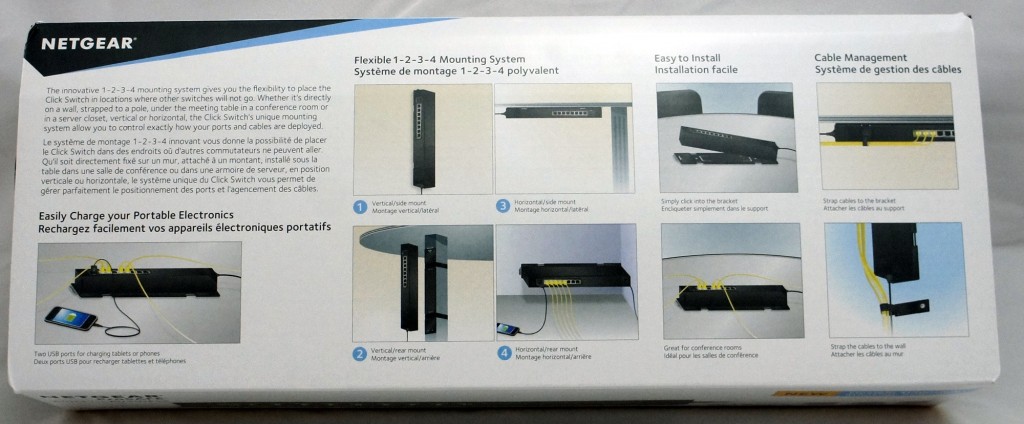
This designation is a bit of a misnomer, since both the Cllick and Unmanaged Plus lines have management features, though not as many as a full-fledged managed switch would. Wikipedia defines this category as “Smart Switches”, which are is a subcategory of managed switches.
Being “Smart” means that the Gigabit Click Switch (GSS108E) can do all sorts of things unmanaged switches can’t do such as QoS (Quality of Service, which effectively allows the user to determine a hierarchy of priority for different types of traffic, like giving online gaming priority over torrenting for example), rate limiting (which is handy for all sorts of useful stuff like throttling your roommates’ internet to make sure you get all the bandwidth), and the ability to create a VLAN (virtual local area network, which is essentially a sub-LAN on an existing physical LAN).

The Click Switch line is part of Netgear’s ProSAFE collection, which is Netgear’s Business/Professional class of network devices. Because of this, a lot of features the Gigabit Click Switch (GSS108E) supports will likely only be used in a business environment, but it still has a place in the home as well for the same reason you likely drive a car with features you never knew about, let alone use – it’s nice, works well, and the extra features are something to brag about, or use if you ever get around to reading the manual.
I know those of you who don’t know or care about the technical details of networking probably just skimmed over the last two paragraphs, though I question why you’d be reading a gigabit switch review in the first place…
The “Click” in the Gigabit Click Switch (GSS108E) refers to the most visible feature of the switch – the easy mounting bracket that allows for four different mounting configurations. It can be mounted horizontally, either from the rear or from the bottom, as well as vertically, also from the rear or the bottom, for a total of four possible configurations.
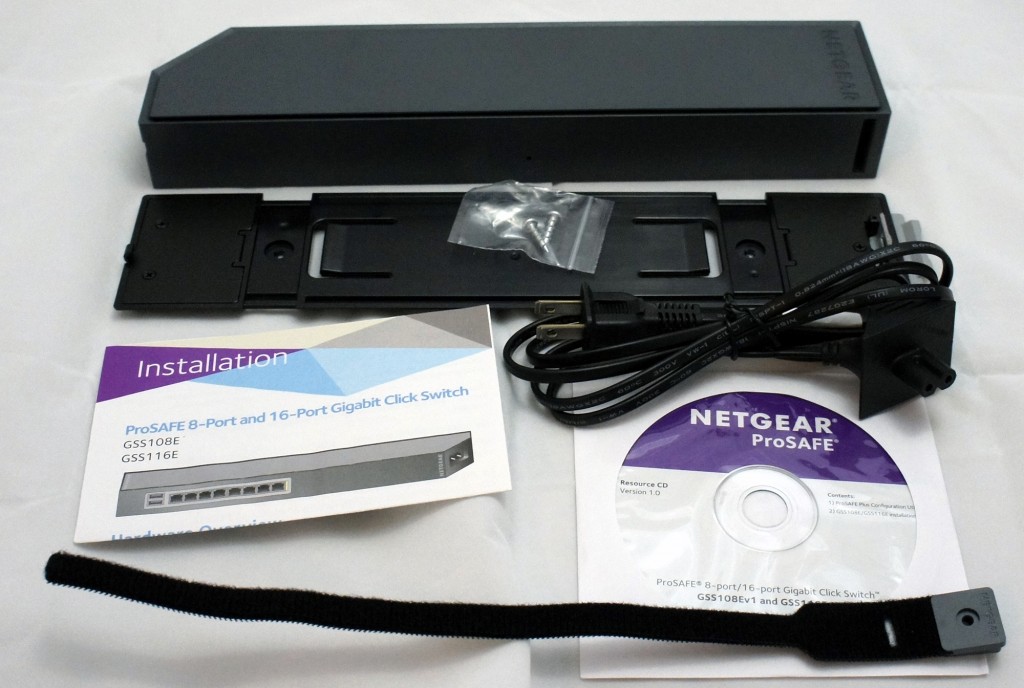
Personally, I don’t have a good place to mount the switch in my apartment, and I imagine the leasing company may take issue with me screwing a gigabit switch into a wall. I could attach it to my desk, but considering I have years-old Ikea furniture I’m always on the verge of replacing, I figure it’s not worth my time or effort at the moment. If I were to mount the switch though, it’s very easy, it just requires use of the two simple screws that came with the switch.
The switch is much longer than a typical unmanaged eight port gigabit switch, but of course, it has all sorts of management features that require additional internal hardware, and since you’re expected to mount it on a wall or under a desk, the difference in size hardly matters. There’s an obvious joke to be made here, but I like to think I’m above that. (I’m not).
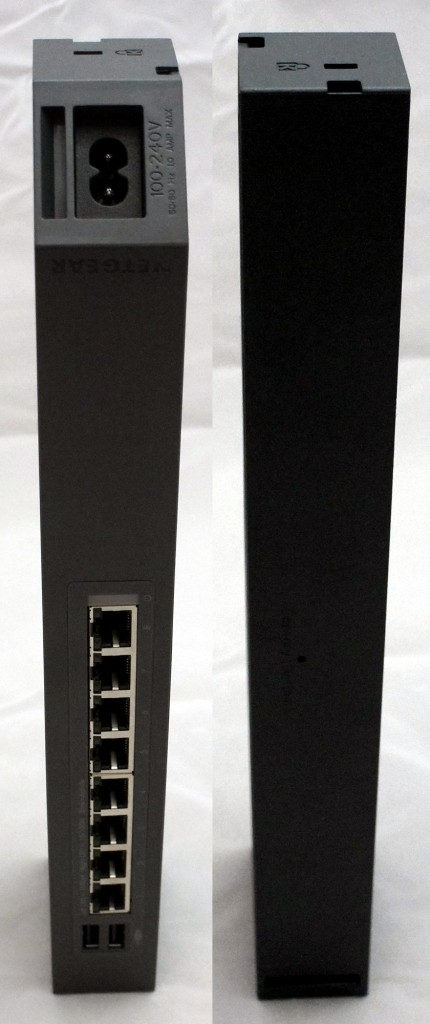
The Gigabit Click Switch (GSS108E) works beautifully as a plug n play unmanaged switch, requiring no initial configuration unless you want to do it.
If you do decide to customize the settings on the switch, you can either do it via access to a web portal, or you can use Netgear’s ProSafe Plus Switch Utility software, which has quite a lot of options. The guide for that can be found here if you want to spend your evening reading technical manuals.
To be perfectly honest, I have very little experience with professional-level networking, so many of the options were beyond my need or understanding. However, the ability to manage traffic over the switch is fantastic. For users that have a mediocre or poor router, the gigabit switch can make up for a lot of the router’s deficiencies (provided the user’s devices are plugged into the switch. A switch won’t help improve Wi-Fi signal or speed in the same way that a surge protector won’t improve your cell phone signal or speed, they’re not related).
The full feature list for the Netgear ProSAFE Gigabit Click Switch (GSS108E) is below:
Hardware
- 1-2-3-4 Click Mounting system allows for
- Vertical/side mount
- Vertical/rear mount
- Horizontal/side mount
- Horizontal/rear mount
- Multi-directional power cable can be routed outwards or downwards
- 2 Quick access USB charging ports for tablets or smartphones
- Rugged reenforced plastic (8-port) and metal (16-port) case
- Internal power supply eliminates the wall wart power adapter
- LED lights can be turned off for non-distracting placement next to a TV
- Silently runs without a fan
Traffic Management
- Auto Negotiation of speed and duplex modes
- 2x Flow Control
- DHCP Client
- Dynamic MAC address management
- 1Q-based or port-based VLAN
- QoS based on WRR, strict priority, or both
- Port-based and IEEE801.2p-based QoS
- QoS based on ToS (Type-of-Service)
- DSCP Support
- Rate Limiting
Multicast Efficiency
- IGMP snooping, v1, v2 and v3
- IGMP Snooping querier (16 and 24 port models only)
- Blocking of unknown multicast traffic
- Act as static multicast router port
Reliability, Performance and Troubleshooting
- Port mirroring both on ingress and egress traffic
- Jumbo frame support
- Broadcast Storm control
- Cable diagnostics
- Loop Detection
- DoS Prevention (GSS116E Only)
- Energy Efficient Ethernet (IEEE802.3az) compliant
Switch Management
- Plus Utility
- Web-based Management
- Firmware Upgrade thru Plus Utility (TFTP)
- Firmware Upgrade thru Plus Utility (TFTP)
- Configuration Upload (to Server)
- System password protection
Another huge benefit of getting a Netgear ProSAFE switch is that they all come with Netgear’s ProSAFE Lifetime Hardware Warranty, as opposed to many consumer-grade switches which come with a warranty of just one year. This will be convenient for when you one day damage your gigabit switch in an unfortunate boating accident; the lifetime warranty will have you covered. (I’m fairly certain the warranty doesn’t actually cover unfortunate boating accidents).
The full specifications for the Netgear ProSAFE Gigabit Click Switch (GSS108E) are below:
- Model Description: 8-port Gigabit Click Switch
- Gigabit Ports: 8
- USB Charging Ports: 2
- Max MAC entries: 8K
- Buffer Size: 2 Mbit
- VLAN (Number Supported): 64
- Supported Multicast Groups: 128
- Auto Denial-of-Service Prevention: No
- Port Trunking: No
- Max Number of Source Ports Allowed (Many to 1): 1
- LED Lights Off for Stealth Operation: Yes
- Internal/External Power Supply: Internal
- Max Power Consumption (Watts): 14w
- Number of Fans: 0
- Acoustic Noise Level @25C (dBA): 0
- Operating Temperature: 32° to 104°F (0° to 40°C)
- MTBF: 1,031,177 hours
- Weight (kg): 44kg
- Dimensions (WxDxH) mm: 305 x 65 x 35mm
- Case Material: Plastic
- Electromagnetic Compliance (A or B): B
As listed in the specs, the switch has eight gigabit Ethernet ports, and it also includes two USB charging ports. These are nice additions as the presence of the USB ports differentiates the Click switch from other eight port gigabit switches, even to the casual observer. Some casual observers might mistake the USB ports for something silly like Firewire or HDMI, but that’s the fault of the observer; USB ports look nothing like Firewire or HDMI.
The Netgear ProSAFE 8-port Gigabit Click Switch (GSS108E) currently retails for $69.99.
There are a couple things the average consumer may want to consider. Unmanaged consumer-grade eight port gigabit switches can be found in the approximate $25-$35 range, so for someone looking for something very basic to just extend the number of Ethernet ports available to them might find the GSS108E might be too pricey.
On the other hand, someone who has a poor to mediocre router might want the extra features included in the GSS108E, with the added benefit of the USB charging ports. In that case, the $69.99 GSS108E is a great value.
Also, power users may want a gigabit switch with the modular mounting capabilities and advanced network management options the GSS108E provides, for far less than a typical managed gigabit switch would cost.
In that same vein, businesses both large and small would likely benefit from an affordable switch which has a place in any conference room or at the hub of any set of desks.
Gigabit switches are not something I typically put a lot of thought into, but thankfully Netgear does. The Netgear ProSAFE 8-port Gigabit Click Switch (GSS108E) certainly packs more features and value than I expected in a sub-$100 gigabit switch.
Kilroy Joins the Army – Part V – Basic Training (BCT)
My friend and fellow Not Operator author, Kilroy, said he was joining the US Army last year. We realized that his experiences would make for an interesting read, especially when there are so few online writings about what it is like, emotionally and physically, to experience modern basic training and beyond. He agreed to keep a journal of his time, and that we would publish it to Not Operator.
Kilroy tends to write his personal journals with pretty purple prose, so with his permission, I’ll be editing and paraphrasing his journal a bit to make it an easier read, with the help of my other friend and fellow Not Operator author, Michael. I’ll also be adding comments of my own in bold brackets [like this] to provide some extra context when necessary. If there’s large enough demand for it, we will post the full, unedited, version of Kilroy’s journal. To avoid making Kilroy’s experiences one giant wall-o-text, the journal will be broken up into an ongoing series of articles where it makes sense to do so. Plus, with Kilroy still in the Army, the journal is far from complete.
All entries in the Kilroy Joins the Army Series can be found here.
Without further ado, welcome to Kilroy Joins the Army – Part V – Basic Training (BCT).
Day 16:
Today begins like every other day – in the dark, dressed in soiled camouflage, and waiting for the sweet release of death. [Kilroy is clearly enjoying himself]. I'm on fire guard duty, doing a whole lot of nothing during a whole lot of empty time I could be using for sleep. [This fire guard duty happened to be the midnight shift, which happens to be approximately the halfway point for their sleep schedule].
I’m a year older today, though there’s no time to consider it. In any case, if anyone knew, the Drill Sergeants would smoke me. [The Drill Sergeants will usually make people do extra pushups/sprints/etc. on their birthdays].
The entire day was consumed by obstacle course challenges from early in the morning until late in the afternoon. Courses were split into two separately named activities: “Fit 2 Win” and a “team building challenge course”. The “Fit 2 Win” course is a traditional obstacle course run, and the “team building challenge course” was a set of thinking puzzles meant to foster group development.
We started the day dressed as trainees and ended it dressed in mud. The South Carolina sand clings to everything; it’s a fine grit that refuses to let go no matter how much you try to brush it off – especially since no one is given the luxury of running water or the ability to wash up. Even after returning, there was no time to shower and I spent the rest of the day wallowing in my own filth.
Laundry is starting to pile up again and the rancid smell of multiple days' sweat and grime hangs in the air of our bay. The Drill Sergeants complain of it, yet it should be blindingly obvious whose fault it is that we have no time to do laundry.
Day 17:
Today began in the dark as usual; the call coming for all of us to proceed downstairs where they had us march 2 miles under the load of a heavy rucksack. After that, we were sent off to do the Land Navigation activity. Despite my initial trepidation, the team worked out well.
The Night Land Navigation activity went just as well. I wrote down all the points we came across during the day just in case, and it turned out to save us from having to redo them manually at night, which made the task supremely trivial.
After another day in the South Carolina outdoors, I get the sense that I may never be rid of the South Carolina sand that inundates every outdoor activity we do, with fine particles clinging to everything. Somehow no matter what, you always seem to find the sand permeating all of your belongings, even if they’ve just been washed. The Army slogan should be: “Join the Army, eat sand.”
As always, I’m missing a variety of things available to you in civilian life. I’m looking forward to watching a Hong Kong film next chance I get. We're almost two weeks into BCT and I'm somehow feeling even more burned out than before. Even with these daily changes to break the monotony, I'm still desperate for sleep and time to myself. All of us are constantly tired, yawning and miserable, but it seems we're becoming acclimated.
Day 18:
Yesterday ended with us staring up into a midnight blue sky occluded by the branched canopy of the forest. Today began the same way. [In case it isn’t obvious, they camped in the woods overnight].
Immediately, they’re having us hurry to pack, hurry to play security in the not-yet-light woods, hurry to meals, hurry, hurry, hurry. They herd us into bottlenecks of time we can't control and then complain and yell at us when we aren't perfect. This perfectly exemplifies the military practice of “hurry up and wait”.
Many of our own standards have fallen; getting parts of a heater meal are the most enjoyable thing we’ve had. [From what Kilroy tells me, they’re even worse than MREs (Meal, Ready-to-Eat)]. I haven't enjoyed any of it, but at least it’s not the cold food we’ve been given as of late.
This morning I’ve started thinking about my career choice again. I still feel the call to write, but that’s not the path I’ve chosen. Instead, I chose a job that requires physical challenges along with a willingness to abstain from critical thinking. However, the appeal of being able to choose my own life – especially in a creative position is starting to feel significantly more alluring.
I haven't had any dreams the past few nights – the lack of long portions of sleep robbing me of my mental escape. Occasionally I have quick dreams in my various seconds of micro-sleep, but upon waking I’m left with nothing but faint recollections of colors and lights that have no meaning outside of the dream.
Today's activities thus far have been a full ruck march back from where we had camped and into the CBRN [Chemical Biological Radiological Nuclear] training range – a place where they had us dress in our MOPP suits [Mission Oriented Protective Posture, just a fancy name for a HAZMAT suit] and don gas masks. The heat was sweltering and I was effectively blind with the suit and mask on.
[Once inside the gas chamber, they had the trainees remove their facemasks to experience what the CS gas (tear gas) feels like].
Exposure to the gas itself was not as bad as it was hyped up to be. The phrase I associated with it was “like Taco Tuesday with the special sauce.” The actual feeling of burning subsided rapidly from the initial exposure, but the pain in my eyes, nose, and throat wasn’t any worse than pepper spray. [Since I’m sure you are wondering why Kilroy knows what pepper spray feels like, the short story is that he had a pepper spray canister, a friend didn’t know what it was and pressed the release button to see what it did, accidentally spraying it in a small dorm room].
The rest of the day was filled with more classroom instruction. We had a general feeling of exhaustion hanging in the air between us all. I'm adjusting mentally; some aspects of my thought process have continued to shut down while I struggle to keep others alive. The Army likes to do your thinking for you, so you adapt to that mentality to get by, but it’s not something I want to become long-lasting.
A running joke I have with Ryan [that’s me!] is that if he ever joined the military, he’d have a rucksack full of nothing but baby wipes, opting to dump out all additional gear to make room for more wipes. The used wipes would weaponized in the absence of firearms or ammunition.
The funny thing is that to clean ourselves in the field, we bring baby wipes. I’ve found myself in the field with my FLC [Fighting Load Carrier, basically just a vest with a bunch of pouches] on and my spare mag pouches shoved full of wipes. They’ve been used to clean ourselves, our weapons, our hands, etc. They’re surprisingly helpful to have handy.
Day 19:
Reality cuts out and cuts back clearly, like a quick scene change in a movie, the time in between lost to me. [In plainer English, Kilroy went to sleep, but was up again quickly, feeling like no time had passed]. I’ve been assigned the midnight shift fire guard again, just sitting around waiting for something to happen.
Being bay boss is wearing my patience thin due to being inundated by constant queries about whether or not people are on fire guard, as if they expect me to have more personal time than anyone else. The fire guard schedule is written on the damn board, do not ask me.
There’s more variety in our daily morning PT now, with a new running activity that I managed to struggle through. Beyond that, each day is more of the same – a kind of rhythm comprised of hectic mornings and low energy afternoons, which ends with evenings of frustration.
I've run into a few people I know from reception battalion, all pretty bright kids. The catch is they are all being chaptered out to go home, either due to injury or because they want to quit. One of them was someone I flew out from Los Angeles with.
It's a surreal experience knowing that your peers are leaving one by one – people you thought would make it. The question is what they'll do now that this career path is no longer available to them. If I were to fail at this for some reason, the idea of being a monk seems to have some appeal to it, as ridiculous as it sounds. [There’s a 0% chance of Kilroy becoming a monk].
The advice I received about this place was to do my best to stay positive, but in light of seeing my peers disappear, that’s harder than ever. We’re just about at the end of the second week of BCT and the number of people who are sick is rapidly increasing, possibly even outnumbering the amount of people who aren't. One of the recruits in our bay has even gone to sick call because they were spitting up blood.
Morale is low – The systems for fire guard are making everyone crazy. However, my responsibilities have lightened up. Thankfully, the task of assigning fire guard and bay boss duties have finally been passed on to someone else.
This ends Kilroy Joins the Army – Part V – Basic Training (BCT). Next time we’ll pick up where we left off, as Kilroy continues with Army Basic Training. Stay tuned for Kilroy Joins the Army – Part VI – Basic Training (BCT).

